COURSE GUIDES
UK & Ireland

AINTREE (UK)
Despite the course being flat, Aintree presents a significant challenge for horses. The winners are almost invariably still on the bridle as they exit the back straight—reviewing past races will confirm this—and those who aren't often struggle to finish strong. The distance from the home turn to the finish line is considerable, requiring ample stamina and energy reserves in the final stretch. Horses that excel at Aintree are typically those who maintain a consistent rhythm and run comfortably on the bridle, showcasing their ability to sustain their performance throughout the race.

ASCOT - Flat Course (UK)
The round course at Ascot is a right-handed, triangular circuit spanning fourteen furlongs, with a run-in of 2½ furlongs. It features a straight mile course and the Old mile course, which joins the round course at Swinley Bottom. Despite the downhill approach into Swinley Bottom and the relatively short run-in from the final turn, Ascot is characterized by its galloping nature. Since the redevelopment, the turn into the straight has become more sweeping, making it challenging to catch front-runners. Additionally, the ground in the straight now drains faster than the rest of the course, leading to variable going descriptions.

ASOT - Jumps Course (UK)
The fences on the far side present a challenge, especially for novices. However, if you're on a horse capable of clearing them and maintaining momentum downhill, success is often within reach. Smoothly navigating these obstacles conserves significant energy. Ascot favors front-runners, particularly in small novice fields, but winning from the front in a large-field handicap is tough. Key strategies at Ascot include saving ground whenever possible and ensuring you approach the fences correctly.
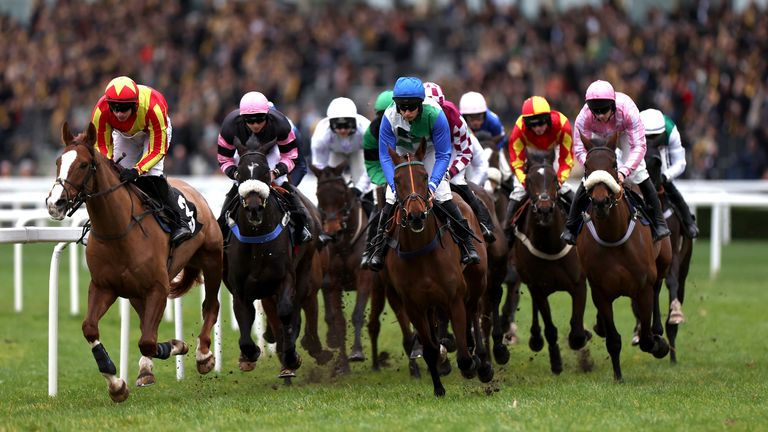
AYR - Flat Course (UK)
Left-handed and galloping, the round course spans about twelve furlongs with a half-mile run-in. The slightly downhill turn before the straight allows front-runners to gain an advantage when heading for the finish. The straight course is notably wide, accommodating sprints with up to 28 runners, making it uncommon for all to stay in one group. The course's character varies significantly with the going, becoming one of the country's most challenging on heavy ground.

AYR - Jumps Course (UK)
Underfoot conditions at Ayr are crucial in determining race strategy. On very soft ground, whether on chase or hurdle tracks, it's wise to bide your time as the field usually comes back to you. Conversely, on faster ground, you risk being left behind if others pull away, leaving you with significant ground to cover. Ayr offers a fair challenge with no tricky fences, but ideally, you need a horse that possesses both speed and stamina to perform well.

BALLINROBE - Flat Course (IRE)
Ballinrobe is a tight track where being prominent is advantageous, and while a low draw helps, it isn't essential. The home turn is the most challenging aspect due to its sharpness; taking it wide can result in losing significant ground. While it may not favor course specialists, having good pace is a major asset. The recent addition of a track extension makes it slightly more galloping when in use, enhancing its overall dynamic.

BALLINROBE - Jumps Course (IRE)
Ballinrobe now features two tracks, with a newly opened extension running outside the original track along the back straight. Both tracks have distinct characteristics. The original track is quite tight, favoring those who maintain a prominent position. The last bend can be tricky, often causing a loss of five or six lengths if not approached correctly, so staying inside is advantageous. This track tends to develop course specialists due to its challenging nature. The new extension, which I haven't yet ridden, appears to be a positive addition, offering a more galloping and horse-friendly experience. The fences at Ballinrobe are among the easiest in the country.

BANGOR-ON-DEE (UK)
The track is left-handed and fairly sharp with minor surface undulations. Races are typically well-run, particularly on the hurdle course, possibly due to runners frequently being on the turn. While the fences were historically considered quite stiff for a lesser National Hunt course, recent evidence suggests they may not be as challenging as once thought. Despite this, the course offers a fair test to both horses and riders. It's crucial to maintain a good rhythm throughout the race and navigate the turns efficiently to perform well. Overall, the track combines sharpness with subtle undulations, demanding both speed and agility from competitors.

BATH (UK)
The left-handed, galloping round course at just over twelve furlongs forms an elongated oval. With a nearly half-mile run-in, horses that commit early in the straight often struggle in the closing stages due to the steady climb to the finish. The unique head-on camera angle from two furlongs out to the final stages makes this one of the trickiest courses in the country for in-running bettors. As the highest course in the nation, and with no watering, the ground can become very firm during dry spells.

BELLEWSTOWN - Flat Course (IRE)
Bellewstown is a track that demands a well-balanced horse with pace. The cambers, undulations, tight turns, and road crossings can easily unbalance a horse, so having a horse that can maintain its position is crucial. Being up on the pace is advantageous for horses handling the track's challenges. While the bends are tight, and being wide can be disadvantageous, the long straights offer a good chance to secure a position. The sprint track is particularly challenging, constantly turning, and a low draw is beneficial on firmer ground. Making up ground on the sprint track is difficult due to its fast pace and two separate road crossings, which can unbalance horses. The track management does an excellent job of maintaining a safe surface, even in dry summer conditions, by watering efficiently.
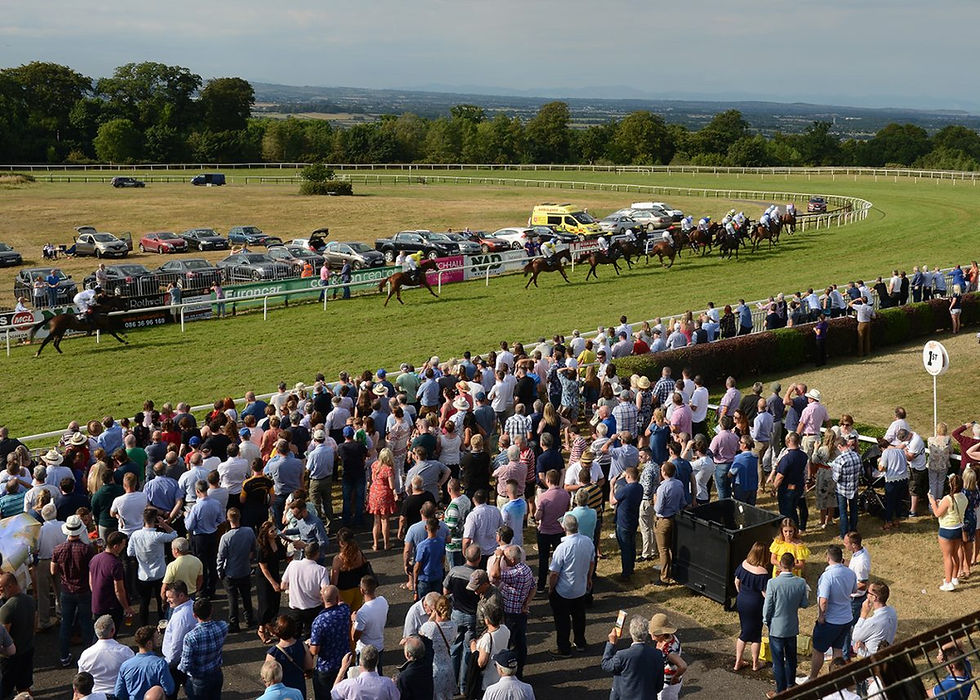
BELLEWSTOWN - Jumps Course (UK)
The track is sharp and undulating, making it ideal for handy, nippy horses. It runs left-handed and stretches around nine furlongs, featuring an uphill finish of about three furlongs. This uphill section can test the stamina of the contenders, often proving decisive in the final stages. The course includes five hurdles per circuit but no races over fences, catering specifically to hurdle events.
Situated on high ground, the track is known for firm conditions, particularly during the three-day fixture in early July. This firmness can affect race strategies and outcomes, as horses and riders must adapt to the harder ground. The scenic high ground also offers spectacular views for spectators, adding to the charm of the venue. The unique combination of sharp turns, undulations, and an uphill finish makes it a distinctive and challenging course, beloved by both jockeys and racing fans.

BEVERLEY (UK)
The course runs right-handed, with the round track extending just over a mile and three furlongs. Despite the uphill finish, it's not particularly stiff, thanks to the downhill turn into the straight and the relatively short run-in of just two and a half furlongs, benefiting those ridden with enterprise. The five-furlong track has a right-leaning dog-leg and is on a continuous rise, making it quite challenging even in normal conditions. On softer ground, it becomes especially demanding, particularly for two-year-olds early in the season.

BRIGHTON (UK)
Left-handed and sharp, this 'U'-shaped course spans approximately twelve furlongs. The pronounced gradients favor handy types over big, long-striding horses, though those ridden aggressively can be challenged by the uphill finish. The camber towards the inside can cause bunching on the rail, particularly in races with inexperienced horses, many of whom tend to hang. In testing ground conditions, it often benefits runners to switch towards the stand side in the final three furlongs.

CARLISLE - Flat Course (UK)
The track runs right-handed and is galloping, with a pear-shaped layout extending just over a mile and a half. It features a challenging uphill finish of over three furlongs. In races of seven furlongs or more, maintaining a prominent position at the home turn is advantageous, with runners up the center of the home straight often favored. Despite the easy turns, the course demands significant stamina, particularly for two-year-olds. When the ground is testing, jockeys tend to switch to the better ground on the stand side to improve their chances.
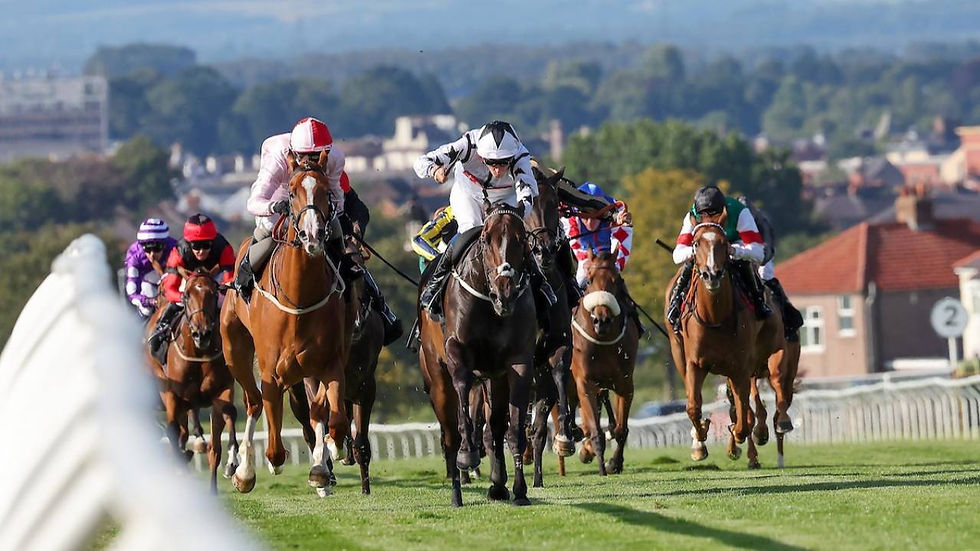
CARLISLE - Jumps Course (UK)
The track runs right-handed and is primarily undulating with a galloping nature. It is particularly stiff due to the uphill home straight, leading to many races being run at a steady pace as riders aim to conserve their horse's energy. The fences are considered the easiest in the country. During mid-winter, the ground becomes extremely testing.

CARTMEL (UK)
The track is left-handed and tight, with only six fences per circuit, putting minimal emphasis on jumping. However, these fences are quite stiff for a minor course, leading to a higher rate of unseats compared to falls, especially over the last few fences, which come in quick succession as the pace increases. The run-in from the last fence is the longest in the country at half a mile, often resulting in lead changes due to horses idling or tiring after an early push for home.
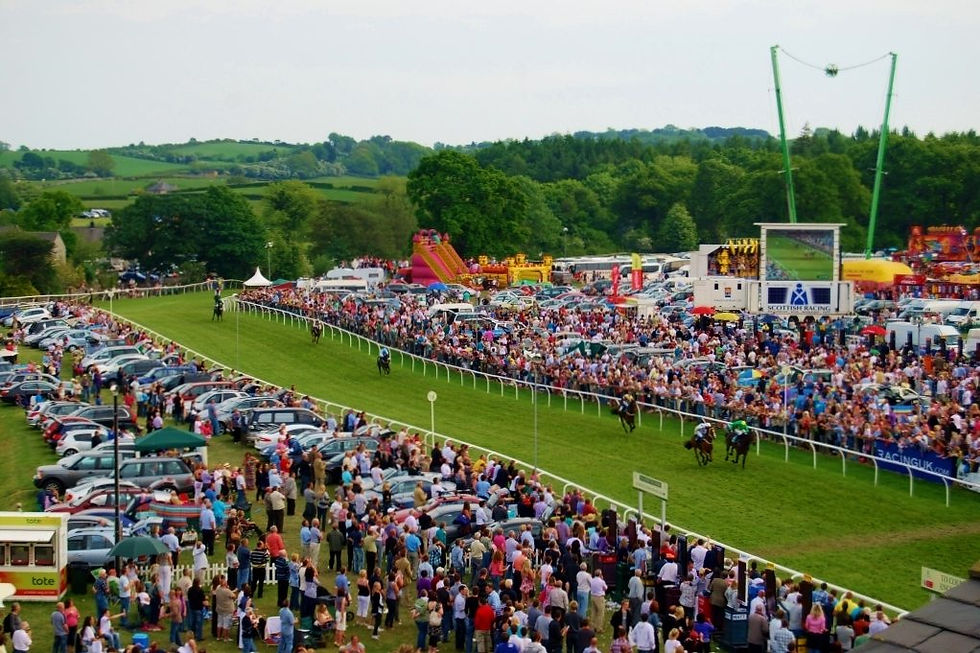
CATTERICK - Flat Course (UK)
The track is left-handed and sharp, with an oval shape stretching just nine furlongs and a downhill run-in of three furlongs. Its undulating and extremely sharp nature poses a challenge for big, long-striding horses, while speedy, handy types hold a distinct advantage. Course form here is more significant than at other venues, with many horses requiring time to adapt on their first experience of the track.

CATTERICK - Jumps Course (UK)
The track is left-handed and sharp, featuring minor undulations. Although the fences are generally considered easy, the well-run chases often result in more casualties than anticipated. The going rarely becomes very testing, favoring quick, agile horses over gallopers that take time to accelerate. Be cautious of the deceptive camera angle as runners enter the home straight, as those in the center may appear closer to the lead than they actually are.

CHELMSFORD (UK)
Chelmsford City, initially opened as Great Leighs in April 2008, features a polytrack surface. The course is fundamentally galloping, characterized by its broad, sweeping turns. It is a left-handed track, measuring just over a mile in circumference. Races of seven furlongs and one mile start from different spurs, providing varied starting points for the runners.
The track's polytrack surface offers consistency and reliability, accommodating racing under various weather conditions. The galloping nature of the course, combined with the wide, sweeping turns, requires horses to maintain a steady pace and rhythm throughout the race. The left-handed configuration adds to the strategic complexity, as jockeys must navigate the turns effectively to position their horses for a strong finish.
Chelmsford City is known for its excellent facilities and modern amenities, attracting both top-tier horses and enthusiastic spectators. The track’s design and surface make it a favorite among trainers and jockeys, who appreciate the forgiving nature of the polytrack and the tactical opportunities the course presents.
Overall, Chelmsford City is a well-regarded racing venue that blends modern design with challenging racing conditions, making it a standout location in the world of horse racing.

CHELTENHAM (UK)
The course is left-handed and undulating, with stiff fences. The fourth last fence, located just after a turn at the top of the hill, catches many horses off guard. The final half mile is uphill, though lead changes on the run-in are less frequent than expected. Horses that race prominently tend to perform well on the chase course, especially in races up to 2m 4f 100yds. The hurdles course features only two flights in the last six furlongs, emphasizing stamina. In large-field races over two miles, hold-up horses often prevail, as there is a tendency to go for home too soon.

CHEPSTOW - Flat Course (UK)
The track is left-handed and undulating, forming an oval shape approximately two miles long, with a five-furlong run-in. Though it's not strictly a galloping course due to its pronounced undulations, it demands significant stamina from horses, regardless of the ground conditions. All races up to a mile are conducted on the straight course, emphasizing speed and agility.

CHEPSTOW - Jumps Course (UK)
Chepstow's record times are impressively fast, highlighting how slick the track can be in good conditions. However, when the ground softens, horses often finish well-strung out. Bettors must pay close attention to track conditions since horses with stamina limitations can perform well on suitable ground but may struggle significantly when it’s heavy. Additionally, the track's undulations and the downhill run from the last jump are crucial factors. While walking the course, you'll notice that from many points out in the country, the stands are not visible. The run-in is steeply downhill and very quick on fast ground, which often causes horses to make mistakes at the final jump.

CHESTER (UK)
Chester is renowned as the oldest racing venue in England, with horse racing on its tight ‘Roodee’ track dating back to 1539. Remarkably, over the course of nearly 500 years, the track has retained much of its original layout, shaped by the city's ancient walls and the banks of the River Dee, which form two-thirds of the circuit.
The course's sharp nature ensures it hosts only Flat racing. Chester’s May Festival has become one of the highlights of the Flat racing calendar. The three-day Festival features the historic Chester Cup, a two and a quarter-mile handicap, and includes Classic trials such as the Chester Vase, Dee Stakes, and Cheshire Oaks. Additionally, it boasts valuable races for older horses, including the Huxley Stakes and Ormonde Stakes.

CLONMEL - Flat Course (IRE)
On quick ground, a low draw from the mile-and-a-quarter and mile-and-a-half starts is highly advantageous due to the frequent turns between these points and the top of the hill, allowing horses to save ground and significantly impact their position. Conversely, on softer ground, it's easier to make a late run as the stiff finish often causes those who exerted too much early on to tire, benefiting the closers. The track can also favor front runners if they are left alone, providing a chance to catch their breath while coasting down the hill.

CLONMEL - Jumps Course (IRE)
The track is right-handed and oval, with a circuit of approximately a mile and a quarter. The initial part of the circuit is uphill, followed by a long downhill stretch leading to the home straight, which is just over two furlongs long and uphill again. There are seven fences per circuit on the chase course, including a long run after the third last fence, two fences in the home straight, and a run-in of about 150 yards.

CORK - Flat Course (IRE)
Cork is a flat track that favors pace horses. From the mile-and-a-half start, a low draw is advantageous as it positions runners close to the bend. Generally, making up ground on the round track is challenging, so horses that lead or maintain a prominent position are preferred. On the sprint track, higher numbers have an edge on quick ground. However, when the ground is softer, the draw becomes less critical, as horses can race competitively from any part of the track. Notably, on quick ground, a hold-up horse drawn high faces difficulties as they tend to get compressed against the stand rail, making it hard to find a clear run.

CORK - Jumps Course (IRE)
The track is right-handed, flat, and oval-shaped. It features a chase circuit measuring one and a half miles and two hurdle circuits, with the inner one being approximately one and a quarter miles. The track is level and galloping in nature, not favoring any particular type of horse. The chase course includes eight fences per circuit, with three fences in the four-furlong home straight and a run-in of around one furlong.

CURRAGH (IRE)
The Curragh features a right-handed, horseshoe-shaped course without sharp bends over two miles, with a three-furlong uphill run-in. It offers starts at five furlongs, six furlongs, six furlongs 63 yards, seven furlongs, and a mile on a straight course. In races on the straight course, pace and positional bias often matter more than the draw.
While the round courses are generally fair, the Derby track differs from the Plate track, with many turns making a low draw beneficial. On the sprint track, a high draw is usually favored, especially when racing up the stand side, regardless of the ground. When the running rail is moved to the middle of the straight track, the draw becomes less critical, but high numbers still perform best. For mile and seven-furlong tracks, there are no significant biases, though runners often move to the middle or stand side when the ground is soft.

DONCASTER - Flat Course (UK)
The course is left-handed and galloping, regarded as one of the fairest in the country. It is mostly flat, with the exception of a slight uphill gradient about a mile and a quarter from the finish. Races between five furlongs and one mile take place on the straight course, though there is also a round mile start on an offshoot of the round course. The track is free-draining, so the underfoot conditions are rarely soft or heavy.
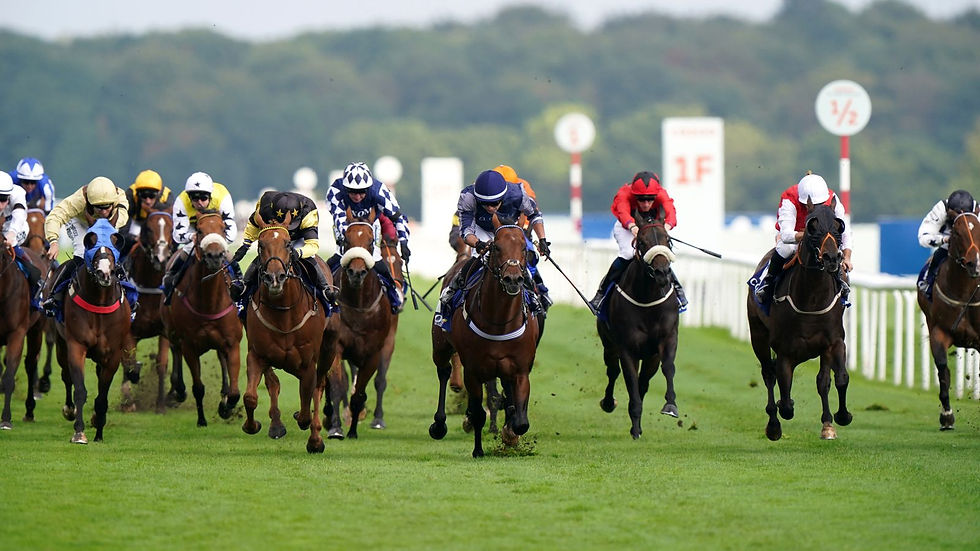
DONCASTER - Jumps Course (UK)
Doncaster is a left-handed, essentially flat, and well-draining course that often favors speedier types despite its galloping nature. Surprisingly, many chases are well-run, contributing to high casualty figures.
Riding at Doncaster, it's crucial to have a horse that travels comfortably. If you're pushing along in the back straight, you risk falling behind those traveling better. This is especially true on quick ground, though you can afford to be more patient when there's some ease underfoot. The track is tough for novice chasers, with a couple of fences, including the last ditch, testing their jumping skills.

DOWN ROYAL - Flat Course (UK)
The right-handed circuit spans just under two miles and is essentially square in shape. The course is undulating for much of the final mile, with a slightly uphill run-in. There is a chute for five-furlong races that joins the main track after about a furlong, with these races being slightly on the turn until straightening just over a furlong out.
Down Royal is a spacious track with plenty of turns, requiring a horse with good pace. Due to the track layout, races often change dramatically late on, with finishers getting involved as the leading group may have started racing too soon. The sprint track emphasizes speed, where a low draw is advantageous. Horses that break quickly and take the lead can be very difficult to catch.

DOWN ROYAL - Jumps Course (UK)
The track is right-handed, undulating, and square-shaped, with a circuit measuring one mile and seven furlongs. The chase course features ten fences per circuit, with four fences in the final four furlongs and a run-in of less than a furlong. In two-mile chases, no fence is jumped more than once. Hurdle races over two miles start on the chase course after the last fence, with the first hurdle jumped only once and a run-in of over a furlong and a half.
This track is a really good galloping course, just under two miles around. It's fair, allowing horses to win from any realistic position, and the fences are generally very fair. The chase track runs on the outer edge, and riders often go widest in search of better ground.

DOWNPATRICK (IRE)
The track is narrow and right-handed, with a circuit of around eleven furlongs. It is not suited to long-striding horses due to the numerous undulations and turns. The chase course features six fences per circuit, with the last two placed close together before an uphill home straight of over a furlong.
This is truly a "horses for courses" track. Passing the winning post feels like going off the edge of a cliff—the drop is incredible and the first ride down is an unforgettable experience. It’s a challenging track to navigate, requiring riders to give their horses frequent breathers as they tackle the hills. Ideally, a handy position is best, but with many riders aiming to be prominent, races can sometimes start too quickly. In such cases, it's possible to succeed even if initially off the pace. The final furlong and a half is a stiff test, and the fences are among the easiest in Ireland.

DUNDALK (IRE)
Dundalk is known for its fairness as a racing track. The introduction of the cutaway rail in December 2013 significantly reduced the number of hard-luck stories. The track generally rides quite firm, which can be challenging for horses that prefer a softer surface. A low draw is advantageous over seven furlongs and particularly over the extended mile-and-a-quarter, as the bend comes up quickly after the start. During the 2014/15 winter season, the kickback had worsened, but the surface refurbishment in July 2015 has restored it to the fair condition it had maintained for years.

EPSOM (UK)
The left-handed, undulating course at Epsom is U-shaped, featuring bends, cambers, and pronounced downhill gradients that favor handy types. Races up to eight and a half furlongs are sharp, giving an advantage to those ridden prominently. The five-furlong course is the fastest globally, being downhill almost throughout, making an early prominent position crucial. In testing conditions, runners often switch to the stands-side rail for better ground.
Balance is vital for horses racing at Epsom, regardless of size. Both big and small horses need to handle the hills, turns, and cambers, as the track tests every muscle. Horses gain momentum around Tattenham Corner, and while some believe that suspect stayers can manage middle distances, thorough stamina is essential to win. A sure-footed speedster is needed for the sprints.

EXETER (UK)
This hilly, galloping course can become extremely testing in midwinter, contrasting with its dry period conditions due to the lack of an artificial watering system. The right-handed, two-mile circuit is laid out in a long oval, featuring eleven fences and a run-in of about 170 yards. The chase course is located outside the hurdles course, but the inside track is often used on the home turn, whether the races are over fences or not. The half-mile home straight is a steady climb to the finish line.
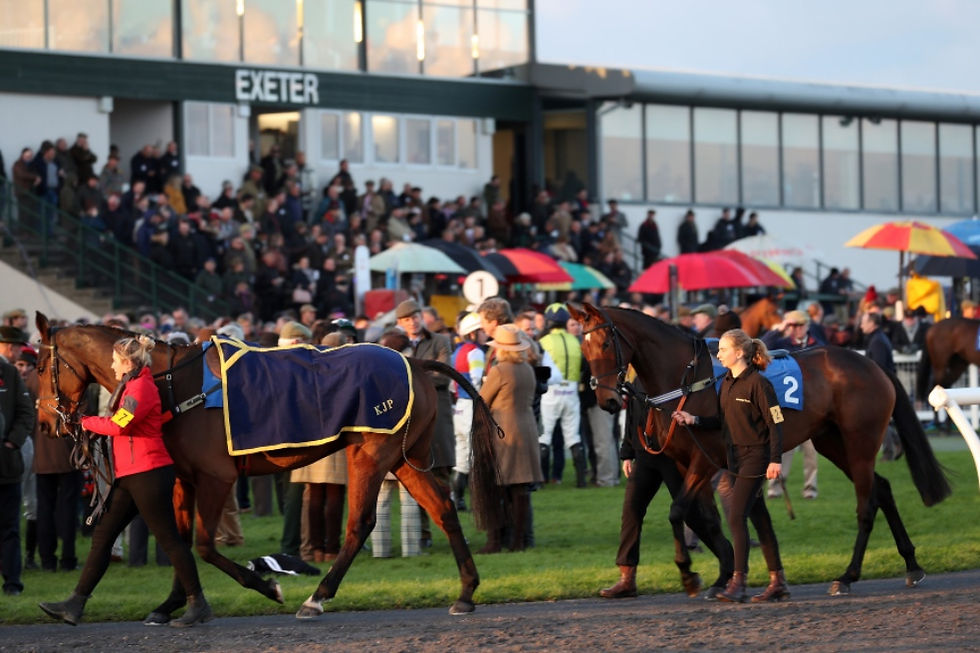
FAIRYHOUSE - Flat Course (UK)
Fairyhouse features a wide, galloping, square-shaped course measuring a mile and six furlongs, and runs right-handed. The straight is three furlongs long and slightly uphill.
Fairyhouse is quite a level track that, while generally fair, tends to favor horses with the pace to race prominently. The draw is typically not a major concern here. However, over shorter distances, a low draw can be challenging for hold-up horses, as they race close to the rail in the straight, often resulting in hard-luck stories.
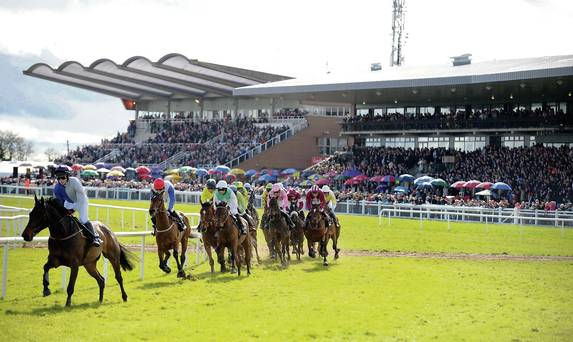
FAIRYHOUSE - Jumps Course (IRE)
The track is a wide, galloping, square right-handed course, measuring a mile and three quarters. It features a steady climb on the side away from the stands, followed by a steady descent in the back straight. The three-furlong home straight is slightly uphill, but the track is not particularly testing and does not favor any specific type of horse. There are eleven fences per circuit and a run-in of around a furlong.
Fairyhouse is a lovely big galloping track, known for rarely having hard-luck stories. Riders can come from any position, and it's an easy track to navigate. However, the fences are some of the stiffest around and can be unforgiving for inexperienced novices.

FAKENHAM (UK)
The course is left-handed and very sharp, with a short run-in on both courses. It's the tightest jumps track in the country, theoretically favoring handy, front-running types over long-striding gallopers. However, underfoot conditions are often more testing than advertised, and races tend to be strongly-run, placing more emphasis on stamina than expected. This results in a relatively high number of casualties over fences for a minor track.
While Fakenham is indeed a sharp track, you still need a horse that handles the trip well. As a jockey, being on a quick jumper is crucial, as a slower jumper means playing catch-up. Going too fast can make the finish seem a long way off. Ideally, it's best to sit and bide your time.

FFOS LAS - Flat Course (UK)
Ffos Las is a left-handed, galloping track, approximately a mile and a half in length. The course is flat and fair, featuring a long home straight with an extension for straight races over five and six furlongs.
Jockeys consider it a good, fair, and honest course with no kinks or ridges. From the stands, there appear to be no obvious quirks or biases regarding the draw or track pace. The races usually proceed at a sensible pace, indicating a straightforward configuration. Notably, when the going gets soft, horses tend to race up the middle of the track rather than sticking to the rails.
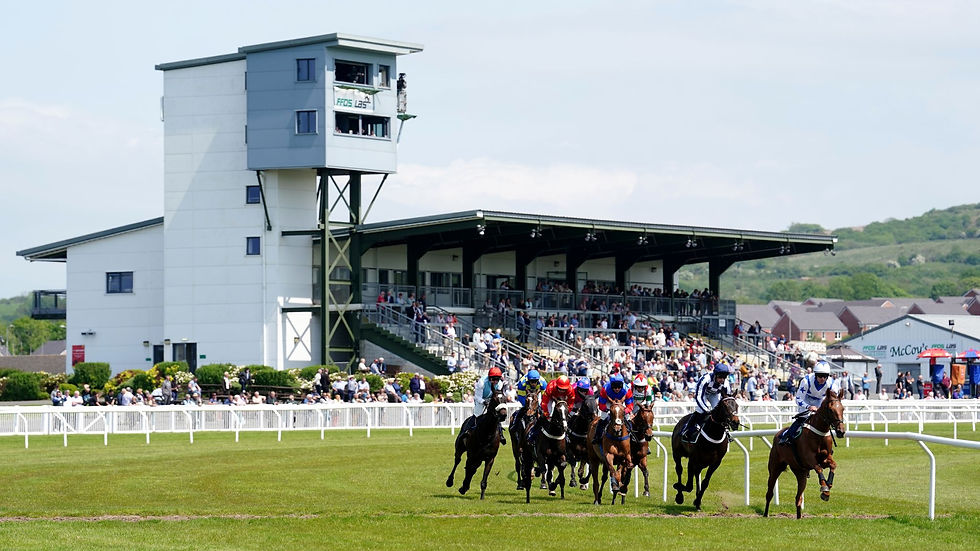
FFOS LAS - Jumps Course (UK)
The course is a wide, galloping, left-handed circuit measuring 1½ miles, with a straight stretch of just over 4 furlongs. It lacks undulations but has a slight rise in the back straight and a gentle descent in the home straight. Both hurdles and chases have short run-ins, making it a fair track overall. The chase course offers a good test of jumping skills. Field sizes are typically small.

FONTWELL (UK)
Fontwell's left-handed, sharp track features a figure-of-eight chase course and an oval hurdles course. The stiff finish is challenging on heavy ground, with races often developing from afar. Despite easy fences, course specialists are common. On the chase course, the lead rarely changes hands on the run-in, though it often appears it might. The paddock exit, located halfway up the hurdles course's run-in, can cause horses to idle or duck out. On soft or heavy ground, the hurdles course favors those who race wide.
Fontwell's figure-of-eight chase track suits quirky horses, possibly due to the disorientating layout or keeping them engaged. Jumping proficiency is crucial; a quick novice can outpace others by minimizing air time. The stiff finish allows for late comebacks, even if initially behind.

GALWAY - Flat Course (IRE)
Galway's right-handed track spans just over a mile and a quarter, featuring a steep incline to the finish. Unless the ground is particularly testing, the track is essentially sharp in character, with a short finishing straight of just over a furlong.
Galway is a very tricky, unique track due to its tight turns and one of the stiffest finishes in the country. Races often go at a good pace, with many jockeys aiming to be prominent. The steep finish demands stamina. Luck plays a significant role as the tight racing and frequent large fields can cause hold-up horses to run into issues. A low draw is advantageous in seven-furlong and mile handicaps. Horses that perform well at Galway are often course specialists due to its distinctive nature.

GALWAY - Jump Course (IRE)
Galway's right-handed track spans just over ten furlongs, featuring a steep incline to the finish. Unless the ground is particularly testing, the track is sharp and favors handily-ridden horses. The chase course includes seven fences per circuit, with the final two fences very close together, followed by a run-in of over two furlongs. The hurdle course, situated inside the chase course, is even sharper and has its final hurdle in the short finishing straight of just over a furlong.
Galway produces specialists, with horses returning year after year to perform well. It is a challenging track to ride, requiring breathers for horses going up the hills. Letting horses travel down the hill before the turn-in is crucial. The final climb at Galway is the toughest in the country. Fences are not overly stiff, but a good jumper can still fall. Some riders excel at Galway, which is worth considering.
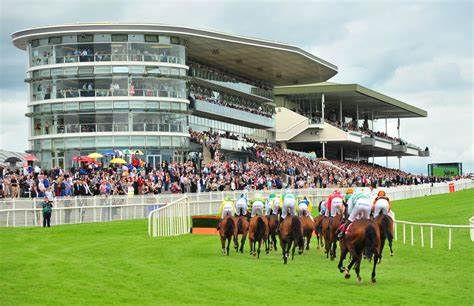
GOODWOOD (UK)
Goodwood is a right-handed, sharp track with two bends. Races up to a mile and a quarter use the lower bend, while those over eleven furlongs use the top bend. The five-furlong run-in from the top bend, combined with turns and downhill gradients, makes it a track favoring handy types, especially in shorter races. The five-furlong course is among the fastest in the country, giving speedy horses an advantage. The course is notoriously tricky, with traffic problems often occurring in the straight, especially near the rail.
Goodwood’s stewards are among the busiest in Britain due to frequent congestion, particularly on the round course. The bottom turn and sharp bend into the home straight claim many victims. On the sprint course, the middle is usually the best spot for a straight run home.

GOWRAN PARK - Flat Course (UK)
Gowran Park is a right-handed oval track of around a mile and a half. While there are some undulations, it is essentially a galloping track, with a quite testing final climb in the three-furlong straight.
Despite its galloping nature, Gowran Park can be considered a speed track. It's trickier to ride than often credited, and it generally favors front runners, especially if they can get an early lead. A low draw is particularly important over seven furlongs, as the bend comes up quickly, making it disastrous to be caught wide.

GOWRAN PARK - Jump Course (UK)
The right-handed, oval track measures about a mile and a half. Despite some undulations, it is primarily a galloping course, testing stamina on soft ground. The chase course, outside the hurdles track, features seven fences per circuit, with three in the uphill three-furlong home straight. The run-in is roughly a furlong.
Riding this track is quite challenging due to its undulating nature. The hill in the back straight is particularly tough, requiring a pace adjustment for horses to finish strong. While the fences are generally fair, the third-last is notably tricky.
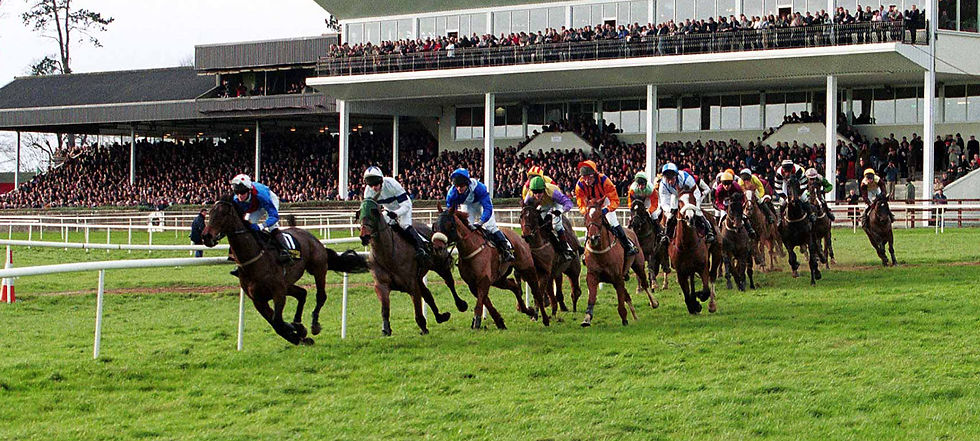
HAMILTON (UK)
Hamilton's right-handed, sharp, and undulating track features steep gradients into and out of a pronounced hollow, just over three furlongs from the winning post, with a severe uphill finish. On testing ground, runners generally stick to the far rail.
In distance races at Hamilton, it's crucial to get your mount to settle early; otherwise, you'll go too fast down the hill, long before reaching the top loop. Balance is vital for any horse, leading to a few track specialists. The steep run to the bottom of the dip can cause jockeys to start racing too early, making the final stretch challenging. There's little draw bias in sprint races.

HAYDOCK - Flat Course (UK)
The left-handed, flat, oval track is approximately thirteen furlongs round, with a run-in of four and a half furlongs that rises throughout. In races of seven furlongs and further, runners tend to stick to the far rail in the straight but often switch to the stand side when the ground is testing. Regardless of the ground, a good position when turning in is often crucial. Sprints occur on the straight six-furlong course, with runners typically racing down the center of the track. Good or firmer conditions emphasize speed, favoring prominently ridden horses.

HAYDOCK - Jump Course (UK)
The left-handed, flat track can be gruelling during winter, emphasizing stamina. In contrast, the Swinton Meeting in May usually favors speed, with prominently ridden horses having an advantage. The course once had an undeserved reputation as one of the hardest to jump around, though statistics didn't support this, and recent evidence shows its portable fences offer little challenge. Since the 2013/14 season, chases have been run on the outer Flat course rather than the traditional track.

HEREFORD (UK)
Hereford's right-handed, almost square circuit is about a mile and a half long, featuring nine fences, with the first after the winning post taken on a turn. The home turn, on falling ground, is quite sharp, while the other bends are easy. Races tend to be well run, and the ground can become very testing in mid-winter. The course resumed racing in October 2016 after a four-year hiatus.

HEXHAM (UK)
The track is left-handed and undulating, with a steep climb from the end of the back straight to the finish. Hurdle races are generally steadily run, but be cautious of horses pushed for home too early, as the testing finish often catches out those appearing to lead comfortably before the uphill section. The fences are generally regarded as easy with few fallers, although there is a disproportionately high number of unseats, possibly due to a lower standard of jockeyship as well as the horses themselves.

HUNTINGDON (UK)
The course at Huntingdon is right-handed and oval with easy bends, offering a flat and fast track about one-and-a-half miles long. There are nine fences per circuit, some of which are rather tricky. The water jump was filled in during summer 2008, replaced by astroturf. The track favors horses with speed over stamina, with sluggards only excelling under extremely testing conditions.
Huntingdon attracts many good horses, particularly classy types from the Flat, due to its level nature, proximity to Newmarket, and the quality races it hosts, like novice hurdles and the Peterborough Chase. The track is very speedy and well-maintained with nice fences. Ideally, a horse that's fast over obstacles is preferred. To win there, you need a horse that travels well, as big National Hunt types are at a disadvantage.
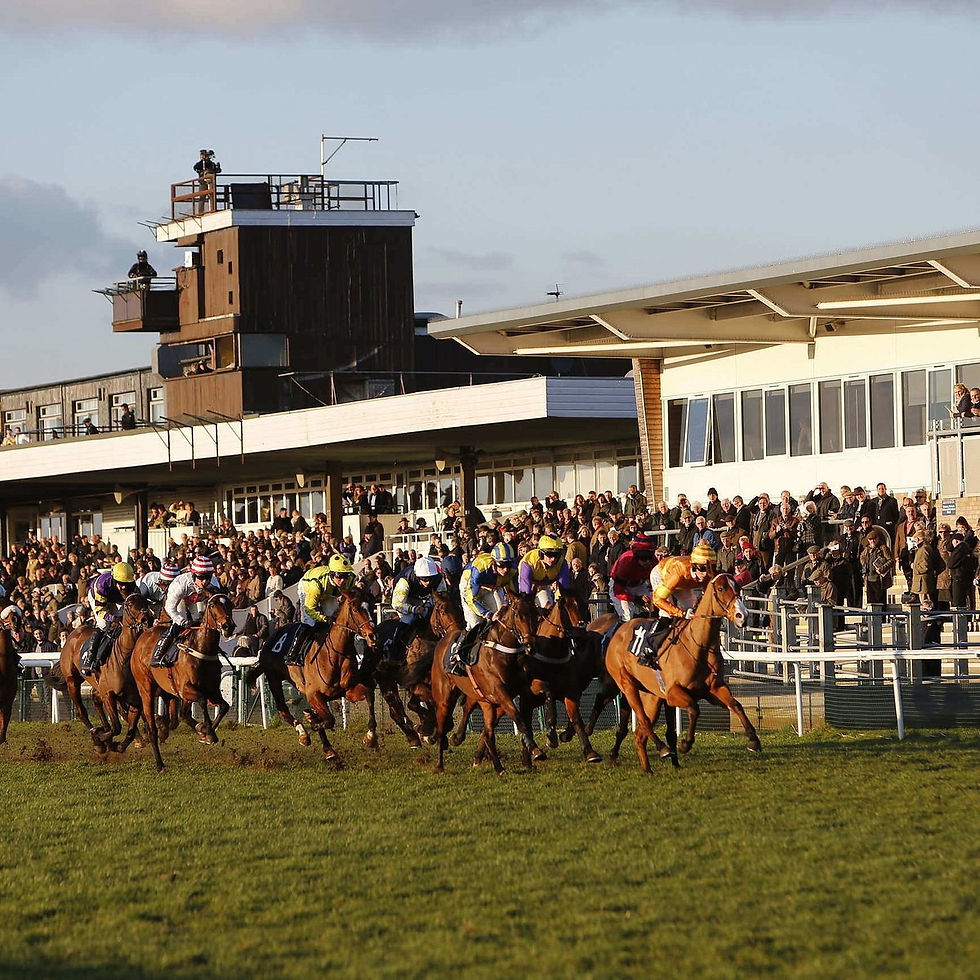
KELSO (UK)
Kelso is a left-handed, generally flat track with separate hurdles and chase courses, the latter about a furlong longer. Since October 2012, the final obstacle on both tracks was moved closer to the winning post, reducing the emphasis on stamina. Conditions can be gruelling in mid-winter, but otherwise, it is a sharp track.
Kelso demands stamina, requiring effort to complete. The recent layout change shortened the chase track’s run-in, but races can still change dramatically in the closing stages. The hurdles course has longer gaps between jumps but is equally demanding. Despite being a stiff course, it is beautifully fair for both disciplines.

KEMPTON PARK - Flat Course (UK)
Kempton, switched to an all-weather polytrack in 2006, is a flat, oval-shaped course with two loops. The inner circuit, used for five, nine, and ten-furlong races, is sharp with a finishing straight of just under two furlongs, favoring speedy, handy types, especially over shorter distances. The outer course has a more sweeping turn and a straight of nearly three furlongs, making it a more straightforward test. The run to the first bend is relatively short for both five and six-furlong races.
Track preparation at Kempton plays a crucial role in favoring front-runners or those coming from behind. The official rating is usually 'standard,' but artificial surfaces depend on weather conditions. An inside draw is advantageous on the round course to avoid running wide. My preference is for patient tactics.

KEMPTON - Jump Course (UK)
Kempton is a right-handed, flat track, known for its fairness and relatively easy fences. The characteristics have remained consistent since the opening of the all-weather circuit, though it can be a stiff stamina test on soft/heavy ground.
Despite recent changes, including Polytrack crossings, it's still a favorite course. It's a great and fair test requiring horses that travel and jump well. Many runners are in contention at the home turn, but they often spread out by the last fence. Only those traveling well can take a breather before the obstacle, while struggling horses find it hard to last home.

KILBEGGAN (IRE)
Kilbeggan is a sharp, right-handed, nine-furlong round track, undulating with a sharp turn after the second-last fence. The uphill run-in of around 300 yards is not suitable for long-striding or staying types. The chase track has six fences per circuit, laid out outside the hurdles track.
The chase track isn't too bad, but the tight hurdle track is challenging. Being handy is crucial, as the pace needs to be fast upfront for those held up to have a chance. Kilbeggan suits quirky horses that need constant engagement due to the frequent turns and undulations. It's a track that often produces specialists, particularly on the hurdle course.

KILLARNEY - Flat Course (IRE)
This left-handed oval track, just over nine furlongs, is sharp with a particularly tight first bend after the winning post. There are no races at a mile or less.
Overall, it is a fair track. A low draw is advantageous, but the long straights provide ample time to secure a position. Making up ground can be tricky as the track slightly edges left down the straight. The bend away from the stands is very tight, requiring riders to present their horses well; failing to do so can cost significant ground.
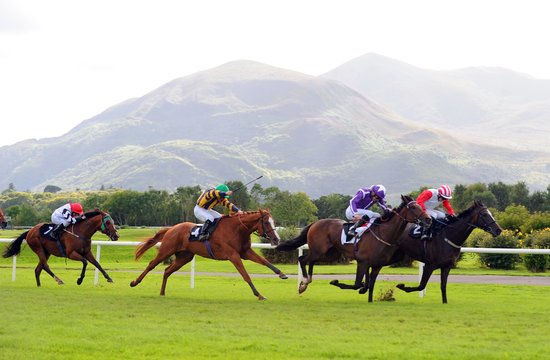
KILLARNEY - Jump Course (IRE)
Killarney features an undulating, left-handed oval track measuring around nine and a half furlongs. It is sharp, with a particularly tight turn after the winning post. The chase course has six fences per circuit, with three in the dog-legged home straight, which is under three furlongs long. The run-in is about a furlong.
The track is quite grand, with sharp bends, especially the one away from the stands, but the long straights balance it well. There's no notable positional bias. The fences are always nice and inviting. The ground can become very soft quickly, making it rare to find conditions between testing and quick.

LAYTOWN (IRE)
The Laytown races are a uniquely special event held annually on the beach in Laytown, County Meath, 45km north of Dublin. Taking place every September, it is the only race meeting on a beach under the Rules of Racing in Ireland and Great Britain. Laytown has no permanent facilities; the race track, enclosures, and facilities are constructed for just one day each year and promptly dismantled afterward.
The track is a seven-furlong straight course on a tidal beach, with races restricted to six and seven furlongs. Racing occurs on just one day each September.
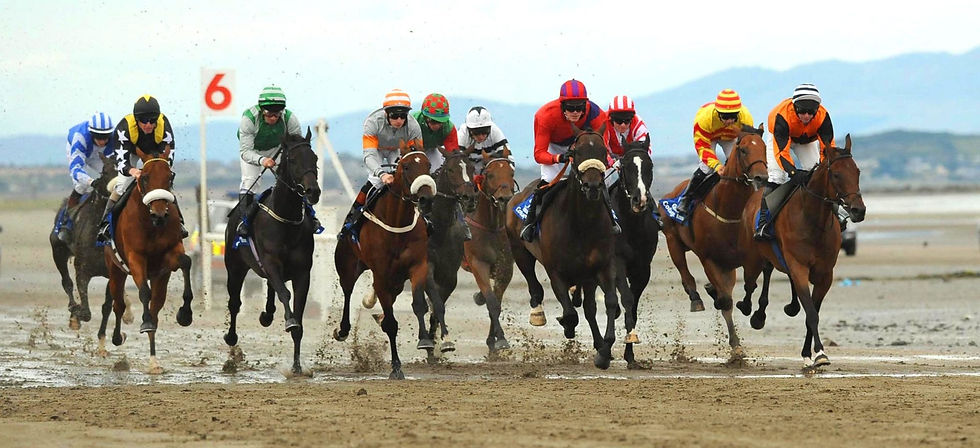
LEICESTER - Flat Course (UK)
The round course is a right-handed, oval track stretching about a mile and three quarters, with a run-in of four and a half furlongs. The straight course, used for races up to seven furlongs, is primarily downhill to halfway, then gradually rises for over two furlongs, finishing level. The galloping track poses a stamina test for two-year-olds early in the season.

LEICESTER - Jump Course (UK)
The right-handed, undulating track features a gradual uphill finish of around three furlongs. Hurdle races run on the Flat course are more testing, as it has been watered during the summer. Races are often steadily run, with the field well bunched early in the straight. The increased casualties over fences suggest stiffer obstacles. On testing ground, there is an advantage in taking a wide route on the hurdles course.

LEOPARDSTOWN - Flat Course (IRE)
Leopardstown features a wide, left-handed oval track stretching around a mile and three-quarters. The course is fairly level, with a slight rise from the last bend and easy turns, making it essentially galloping in character.
Leopardstown is more challenging than it appears. There is a long, gradual rise throughout the straight, and races often become strong tests due to early starts. A low draw is beneficial, especially in six-furlong sprints, as the bend comes up quickly after the start. While it is possible to lead the entire race, it isn't easy, particularly on the outside track, which has a longer straight than the inside track.

LEOPARDSTOWN - Jump Course (IRE)
Leopardstown features a wide, left-handed oval track about a mile and three quarters in length. The course is mostly level with easy turns, except for a slight rise from the last bend. It provides a fair test, although three closely spaced fences in the back straight can catch out less-accomplished chasers. The finishing straight is relatively short. The inner hurdles course is sharper in character than the chase track, offering a significant test of tactical speed.
Leopardstown is a brilliant galloping track with few hard-luck stories, except when tight for room near the second-last hurdle. The inside hurdle track requires handiness, especially in larger fields. It's a deceptively stiff track, requiring more effort than anticipated. The fences are stiff but fair, always riding well.
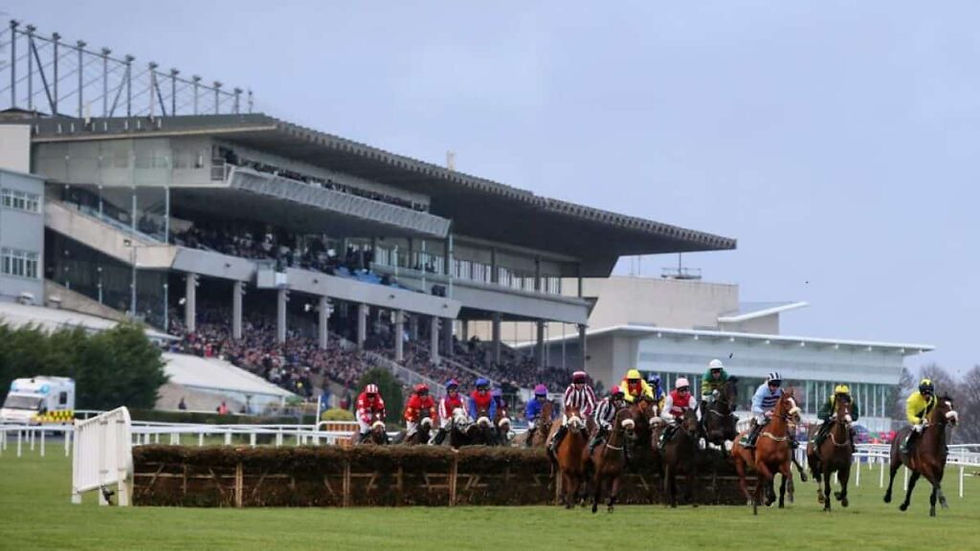
LIIMERICK - Flat Course (IRE)
This right-handed circuit spans a mile and three furlongs, featuring a steep climb in the latter half of the back straight, followed by a downhill approach to the three-furlong straight, which is on a slight incline.
The track's character changes with the ground conditions. On quick ground, a low draw and ample pace are crucial, as it is an easy test from the top of the hill, making it difficult to gain ground from behind. On softer ground, the leading pack tends to come back more often. It is an excellent track for front runners if left alone up the hill on the far side.

LIMERICK - Jump Course (IRE)
The new track, opened in October 2001, is a galloping, right-handed oval track with a circuit of over a mile and three furlongs. It features a sharp turn after the winning post, followed by a stiff climb in the back straight. The course then descends into the three-furlong home straight, which has a slight rise in the final two furlongs. There are seven fences to a circuit of the chase course, five of them in quick succession in the back straight, situated outside the hurdles track, with a run-in of around a furlong.
Riding this track is quite tricky. The climb up the back straight is testing, and horses need a breather to finish well. Riders often kick for home too early on the downhill swing into the straight, struggling up the final rise. The fences are generally fair, though the second-last and, to a lesser extent, the last can be problematic.

LINGFIELD - Jump Course (UK)
Lingfield's left-handed, undulating track is sharp on anything other than soft/heavy ground. Testing conditions often prevail, leading to the highest abandonment rate among jumps courses. A handy position into the straight often pays dividends, particularly over fences. The straightforward fences have had a very low casualty rate in recent seasons. Bumper races are usually run on the all-weather track and are nearly always falsely-run affairs, disadvantaging stoutly-bred NH types.
In very soft conditions, the track rides differently in the back straight compared to the home straight, with the back straight becoming deep and boggy, making fences ride big. Despite this, Lingfield is a beautiful and fair course. The jumps course is less undulating than the Flat track but has some ups and downs, making it a decent test.

LINGFIELD - All-Weather Flat Course (UK)
Lingfield’s left-handed all-weather track, laid inside the turf track, measures just under a mile and a quarter, and is sharp in nature. This favors strong-traveling types with a turn of foot over stamina. Nearly half the round course is flat, then rises to a slight hill summit, followed by a downhill turn to the straight. Lingfield replaced the original equitrack surface with polytrack in 2001, relaid in October 2012.
The 1m 2f all-weather start is very draw-dependent, as are the 5f and 6f starts. The track suits riding in the 'third wave,' where the final attack is launched at the 1f pole. While being patient can pay off, being too far behind can be disadvantageous.

LINGFIELD - Flat Course (UK)
This right-handed circuit spans a mile and three furlongs, featuring a steep climb in the latter half of the back straight, followed by a downhill approach to the three-furlong straight, which is on a slight incline.
The track's character changes with the ground conditions. On quick ground, a low draw and ample pace are crucial, as it is an easy test from the top of the hill, making it difficult to gain ground from behind. On softer ground, the leading pack tends to come back more often. It is an excellent track for front runners if left alone up the hill on the far side.
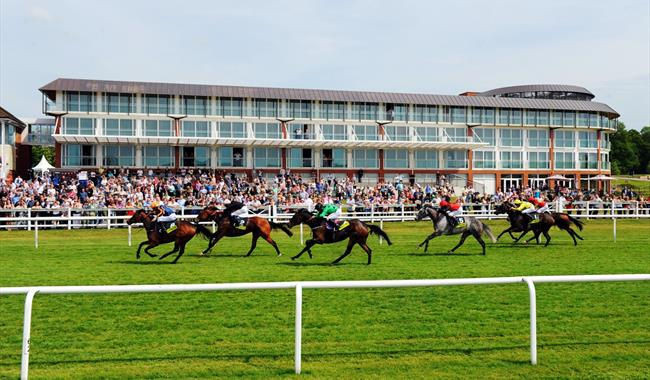
LISTOWEL - Flat Course (IRE)
Listowel features a left-handed, sharp track about one mile and a furlong in length, with a run-in of about two furlongs, favoring speedy horses.
This tight, undulating track handles best when the ground is soft, as it slows everything down and becomes easier to manage. In soft conditions, the draw is less important, but proven stamina is crucial due to the extremely heavy ground, unlike anywhere else. If the ground is firmer, a low draw and pace become vital.

LISTOWEL - Jump Course (IRE)
Listowel features a very sharp, flat, left-handed oval track about a mile and a quarter long, favoring handy types, with even three-mile races presenting little stamina test. The chase track has five fences per circuit, with two in the less-than-two-furlong home straight. The run-in is around 200 yards.
Listowel uses different tracks, resulting in varying degrees of sharpness. The ground is unique, as testing conditions often see many horses struggling, causing fields to spread out quickly. The soil is quite black and holding, and some horses perform poorly on it. I'd always forgive a horse for an inexplicably bad run on testing ground there. The fences are quite stiff.

LUDLOW (UK)
The sharp, right-handed oval track features a nine-fence chase circuit, about a mile and a half long, with a 250-yard run-in. The fences are generally easy, although the first fence in the home straight can catch horses out. The hurdle course runs outside the chase course, offering easier turns. While the chase course is flat, the hurdle course has slight undulations, rarely posing challenges for long-striding horses.
Many jump racing stars have won here, as success demands speed. Races over two miles can be won with non-stayers if they waste little time in the air. The fences are easy, with some horses practically hurdling them, but since the first fence in the straight was re-sited, it doesn’t seem to catch as many out.
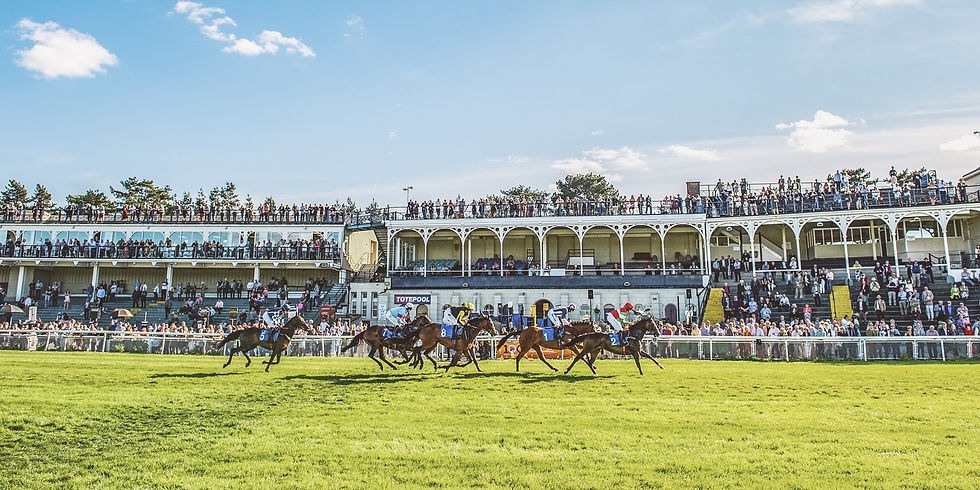
MARKET RASEN (UK)
Market Rasen's right-handed, sharp track has minor undulations and generally favors nippy types, although the ground can become testing. Plenty of races are won by those quickening best on the run to the first obstacle in the home straight. The fences are fairly easy, with the third-last causing fewer issues in recent seasons.
Traveling smoothly through a race is crucial at Market Rasen, despite its relatively flat layout, making it challenging to make up ground. Turning into the straight, you might think you have time to challenge, but if others quicken away, catching up is difficult. Kicking from the turn in, the home stretch feels long, and you may find yourself wondering if you'll ever reach the finish. The home straight is truly lengthy.
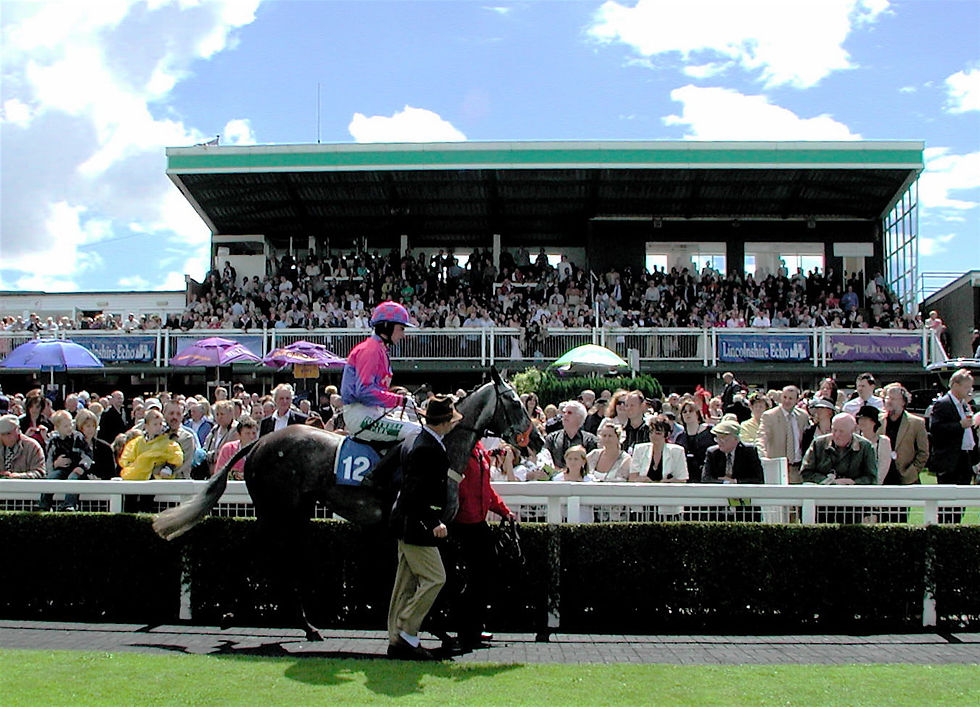
MUSSELBURGH - Flat Course (UK)
The course has notably sharp right-handed turns, especially at the top end. Adaptability is crucial for navigating these bends. Big, long-striding, cumbersome horses face a disadvantage on the round track, particularly in races up to nine furlongs. On the straight course, horses typically race towards the stand rail. A deceptive camera angle can create the illusion that the horse nearest the rail is further back than it appears. This is one of the best-draining courses in the country, with conditions rarely proving challenging.

MUSSELBURGH - Jump Course (UK)
The track is a right-handed oval measuring slightly over a mile and a quarter, almost flat with sharp turns. It favors handy types over gallopers. In late 2012, a polytrack strip was installed on the bend away from the stands to protect ground that was prone to overuse. The track features eight fences (four in each straight) or six flights of hurdles (three in each straight). The two-mile start is located on a spur at the last bend.
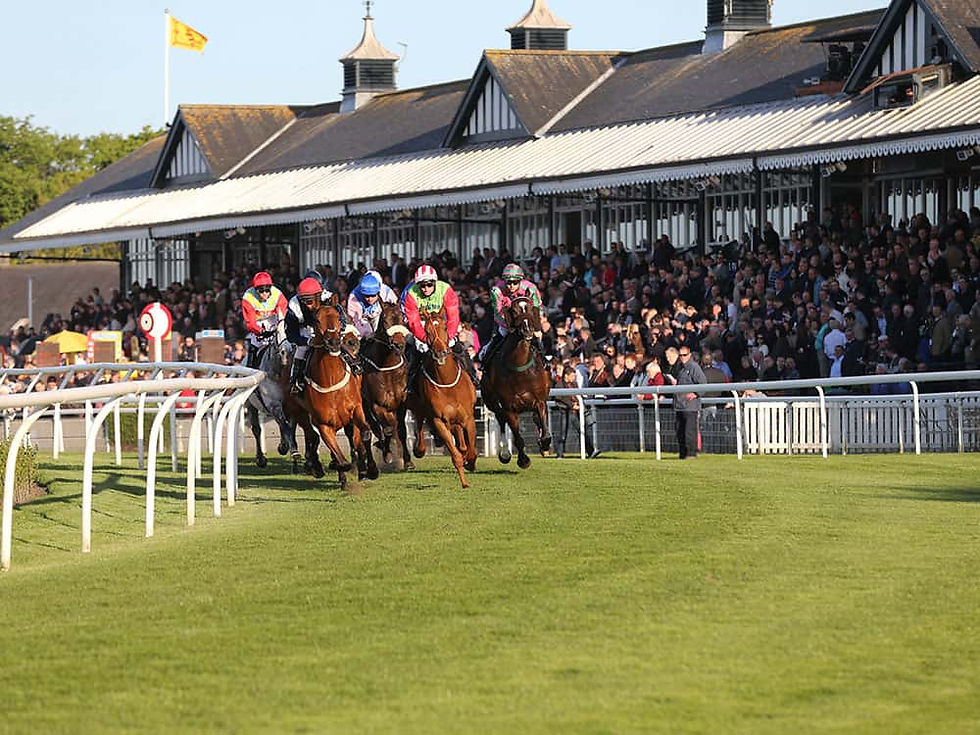
NAAS - Flat Course (IRE)
This left-handed track spans about one and a half miles, known for its galloping nature and a challenging four-furlong straight. It features a two-furlong chute at the entrance to the straight, enabling five- and six-furlong races on a straight course. Nicknamed the “Punter’s Graveyard,” it is considered a fair track. On the round track, the ground before the mile start can become softer, making a low draw preferable for mile-and-a-quarter races. The seven-furlong and mile tracks are fair, with ample time to find position before the straight. The sprint track has improved after levelling out the first three furlongs, reducing ridges. Draw isn’t typically a factor unless the ground gets soft, favoring high draws for races near the stand rail.
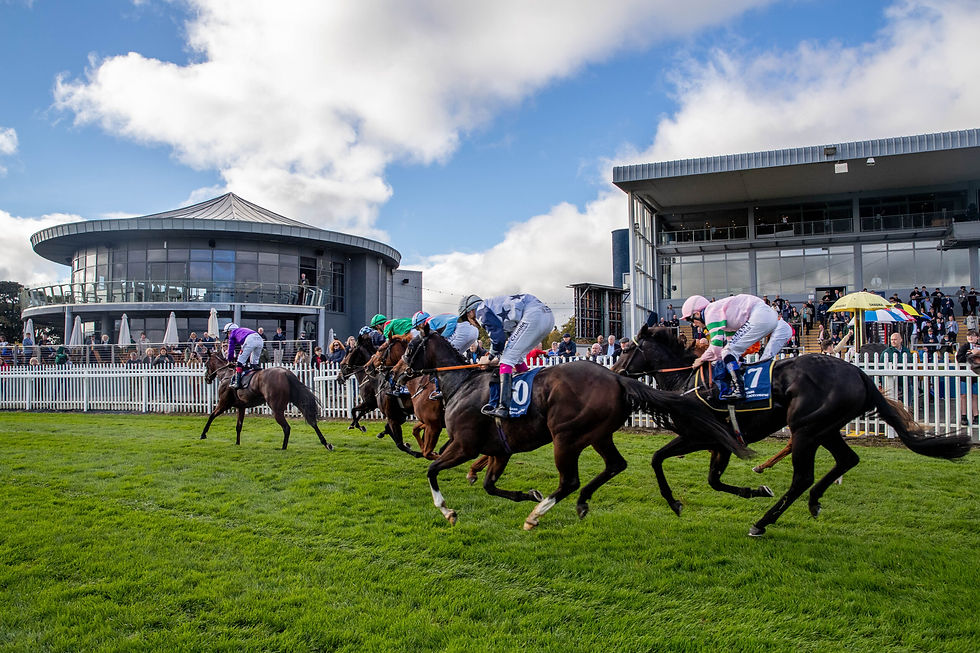
NAAS - Jump Course (IRE)
This left-handed oval track spans a mile and a half and is ideal for galloping, with a stiff uphill finish suited to staying types. The chase course, situated outside the hurdles course, features eight fences per circuit, including two in the nearly four-furlong home straight, and a run-in of over a furlong.
Known as a great galloping track, the ground from the seven-furlong post to the winning post tends to be better compared to the softer and sometimes deep ground past the winning post to the seven-furlong pole, especially when it's heavy. While the stiff finish requires stamina, being handy generally proves advantageous, making it tough for runners coming from off the pace. The fences are challenging but fair, leading to few hard-luck stories around Naas.

NAVAN - Flat Course (IRE)
This is a left-handed oval track that spans one and a half miles, with a challenging three and a half furlong uphill finish. It also features a nearly six-furlong straight course that merges with the main track.
Navan is renowned for its fairness and stiff finish, which can expose horses with questionable stamina. Horses can win from any position on both round and sprint tracks, and the draw isn't a significant factor. Overall, it’s considered one of the fairest tracks in the country.
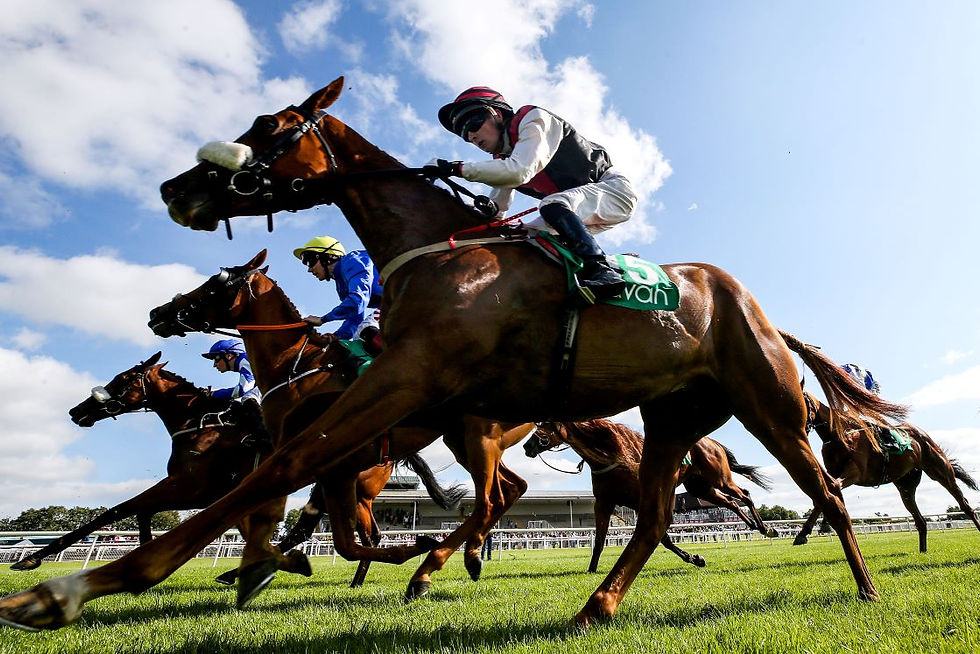
NAVAN - Jump Course (UK)
This left-handed rectangular track extends one and a half miles. It has a galloping character, with a challenging three and a half furlong uphill finishing straight. Conditions can become very testing on soft or heavy ground, so stamina is crucial. The chase course, located outside the hurdles track, features nine fences per circuit, with three fences in the home straight and a run-in of about a furlong. The fourth-last fence is immediately followed by a turn.
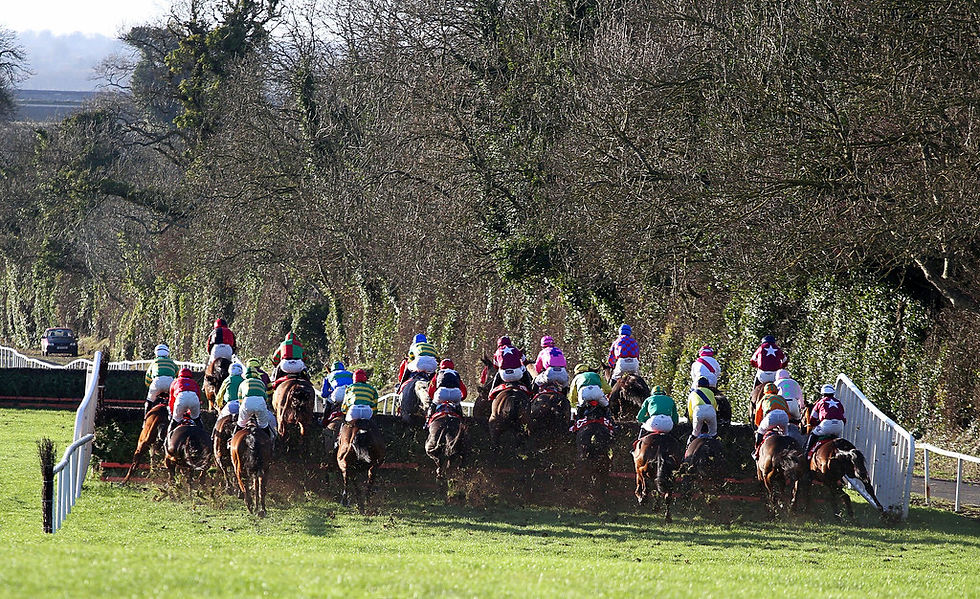
NEWBURY - Flat Course (UK)
Left-handed and galloping, the track at Newbury is undulating throughout the straight mile course. Known as one of the fairest courses in the country, its galloping nature suits big, long-striding horses, though it becomes testing in bad weather. Most action on the straight course happens on the stand rail, but those opting for the center may find an advantage.
Few courses are fairer than Newbury, which is big and accommodating, although the back straight sometimes rides softer than the home straight, likely due to the woodland on the far side. There’s minimal draw bias on the straight track, attracting many trainers with classy horses. The one tricky start is on the spur at the round mile, which can be draw-dependent. Overall, Newbury sees few hard-luck stories.

NEWBURY - Jump Course (UK)
This left-handed, galloping track features minimal undulations, making it one of the fairest courses in the country, though its nature suits big, long-striding horses. The chase course is considered fairly stiff, but a low casualty rate in recent seasons suggests otherwise. Many races are run at a steady pace, and the better standard of horses also contributes to this low figure. Leaders are seldom overhauled on the chase run-in, despite appearances from the elbow.
With two long straights and two sweeping bends, there's ample time during a race, resulting in few hard-luck stories. The track is smooth for horses with the right characteristics. The fences are fair, and while the cross-fence used to claim many victims, it has since improved. Newbury is ideal for novices, unlike trickier courses like Cheltenham.

NEWCASTLE - Flat Course (UK)
Newcastle’s left-handed oval track switched from turf to all-weather during the winter of 2015/16, using the Tapeta surface, just like Wolverhampton. Unlike most all-weather tracks, it features both a round course and a floodlit straight mile.
It’s a huge advantage to get close to the fence in races on the round course at Newcastle, especially in events like the Northumberland Plate. The long turns mean that being more than three or four wide costs significant ground. Winning from a wide berth requires an exceptional horse. The ground on the round track also tends to drop steeply towards the initial bend. Nevertheless, Newcastle is a very fair track, renowned for being beautiful to ride.
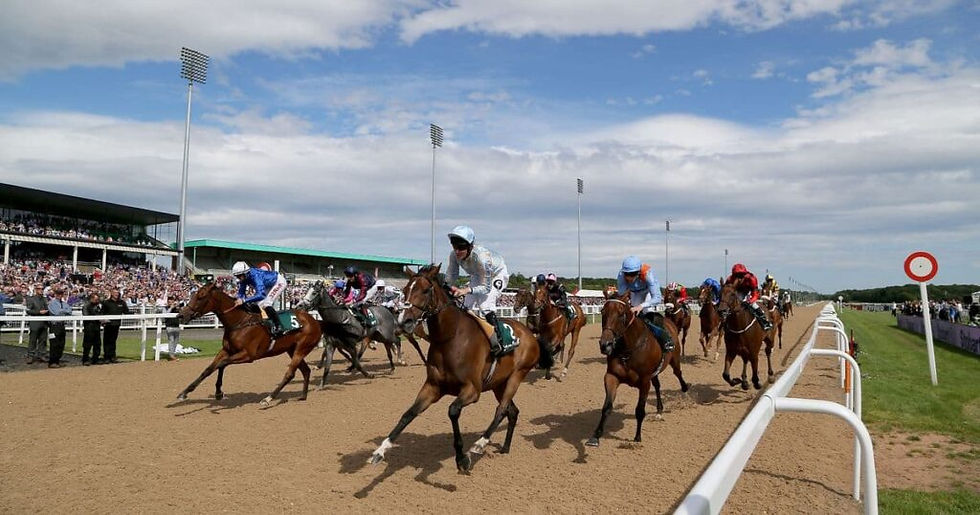
NEWCASTLE - Jump Course (UK)
This left-handed, galloping track features a steady uphill rise from the home turn. The stiff nature of the course often results in steadily-run affairs, particularly on the hurdles course, with races typically intensifying only in the home stretch. Consequently, races may not always test stamina as expected, which likely contributes to a lower-than-expected casualty rate over fences. Being positioned towards the stand rail in the home straight can be advantageous, a fact not lost on senior northern jockeys who often head there.

NEWMARKET - Rowley Mile (UK)
The Cesarewitch course is two and a half miles long, featuring a ten-furlong run-in. In large fields, low-drawn horses are disadvantaged. This wide, galloping track with an uphill finish is ideal for big, long-striding horses, except during the descent into the Dip where they may become unbalanced. Stamina is essential, and those committing too early may falter on the uphill run to the line.
With the longest straight in Britain and just one turn in distance races, this course is a delight to ride. However, there are a few ridges before the Dip, requiring smooth navigation. Jockeys must remember the long uphill finish often catches horses in the closing stages. The chalk base can make it lively, and wind direction is critical. Cover is crucial when facing a headwind.

NEWMARKET - July Course (UK)
The July Course spans two miles and a furlong with a right-handed bend at halfway. The first mile follows the Cesarewitch course, and the last mile is the straight Bunbury mile. Despite undulations in the first three quarters of a mile and a downhill section before a climb to the finish, it's a galloping track favoring big, long-striding horses. Stamina is crucial, much like on the Rowley Mile course.
The key difference between the Rowley Mile and the July Course is the leveling off after the initial climb on the latter. It's a lovely track for jockeys and summer racegoers alike. Riders must be mindful of weather conditions, as there can be a faster strip near the hospitality marquees. The long straight makes it a fair course without a pace bias, ideal for class horses.

NEWTON ABBOT (UK)
Left-handed and tight, this track favors handy types, with prominently-ridden horses generally at an advantage. Fences pose few problems, but the very short run-in on the hurdles course means the lead rarely changes from the last.
Non-stayers can win at Newton Abbot, but horses need to travel well as it feels like you’re always turning. This makes it a good venue for ex-Flat horses. However, the ability to travel is crucial – it’s a nightmare if you’re off the bridle. Horses also need to jump well, as the fences come up quickly, and although the hurdles track is fast, it’s easier to ride.

NOTTINGHAM (UK)
This left-handed track often features a steady gallop due to its sharp bends, especially into the straight, making it challenging to catch prominently-ridden horses. In mile and mile-and-a-quarter races, horses drawn high in big fields are typically forced wide on the turn, unless they drop to the rear or expend significant energy early to get a prominent position. Five- and six-furlong races are run on a straight course with minor undulations, favoring speedy, handy types.

PERTH (UK)
The right-handed circuit spans one and a quarter miles, featuring eight fences with sweeping turns and a flat running surface. The water jump is in front of the stands, excluded in the run-in, leaving a long stretch from the last fence to the winning post.
Perth is a deceptive track; it appears easy but demands stamina as racing often starts far from home. The flat course can invite jockeys to push on too soon. Despite feeling nearly there upon entering the home straight, it's a long stretch where the first fence poses a challenge if the horse isn’t travelling well.

PLUMPTON (UK)
This left-handed, tight, and undulating track favors handy types due to its sharp turns. Hurdle races often intensify early on the final circuit, quickly changing the race's dynamics. The chase course has a high casualty rate, likely reflecting the lower standard of horses rather than the stiffness of the fences. In testing conditions, horses sticking to the inside on the hurdles track may struggle, as better ground is often found racing wide.

PONTEFRACT (UK)
This left-handed track features significant gradients and a stiff, uphill finish, emphasizing stamina over speed in the final three furlongs. In-running punters should be cautious of early finishers. On testing ground, jockeys may race wide for better footing, often moving to the stand side in the straight.
At Pontefract, horses go downhill to the start, so handling keen horses is crucial. Savvy local punters often watch from the 1f marker for this reason. The track is notably stiff, providing a proper test, where being on the inside is a significant advantage. While going wide can work on soft ground, sticking to the rail is best on quicker surfaces. Stamina is always at a premium here.

PUNCHESTOWN (IRE)
This right-handed track is galloping and undulating, with a steady climb over the last five furlongs. It's a fair test for jumpers, with eleven fences per circuit that aren't particularly stiff by British standards, posing few problems for sound jumpers. The cross-country course is long and winding, featuring a variety of banks and obstacles, most of which are only jumped once. The track includes both left- and right-handed turns, with only the final brush fence on the racecourse proper.

REDCAR (UK)
This narrow, left-handed, oval track spans about a mile and three quarters. Races between five furlongs and one mile take place on the straight track. With its flat surface and two sharp bends, it offers a fair test. The course drains well, and in fast conditions, it can be challenging to make up ground from off the pace.
Over the years, a few ridges have developed at Redcar, requiring careful navigation. The tricky bottom turn has caused issues, and the straight feels long, making races seem to change multiple times after the home turn. Patience is crucial, as leading too early can be costly. Late moves often prove successful.

RIPON (UK)
The Ripon track is a right-handed, oval circuit of thirteen furlongs, with a five-furlong run-in and a six-furlong straight course. Its cramped bends and surface undulations make it rather sharp.
In good conditions, Ripon favors front-runners. There's a key ridge about a furlong and a half out, offering a place to kick on and become hard to beat. While it may seem flat, many horses struggle with the track. On the sprint course, the stands’ side rail is the best spot for fast horses. Recent improvements mean most horses handle the round track well.

ROSCOMMON - Flat Course (IRE)
Roscommon is a right-handed oval track of nearly one and a quarter miles, with a three and a half furlong run-in. Though the turns are sharp, it rides well and is considered fair. This quick track suits horses with the pace to get a prominent position.
The draw isn’t a significant factor in shorter races, as there’s ample time to sort positions. There’s a steady rise to the finish, but overall, it’s more of a speed track than a testing one.

ROSCOMMON - Jump Course (IRE)
This right-handed, rectangular track spans around a mile and a quarter. It’s generally flat, but the home straight of over three furlongs is more undulating. The sharp turns favor handy horses. There are five easy fences per circuit with a 200-yard run-in.
It's considered one of the nicest summer jumping tracks in the country, known for its fairness and minimal hard-luck stories. There’s no significant positional bias, though the second-last bend is the trickiest. The fences are some of the nicest in the country and ride well.

SALISBURY (UK)
This right-handed loop course features a seven-furlong run-in, with a right-handed elbow after three furlongs. Horses ridden handily can gain an advantage as the gallop is often steady around the sharp loop section. The straight course is uphill for the last half-mile and quite testing, particularly for early season two-year-olds, making stamina crucial.

SANDOWN - Flat Course (UK)
This right-handed, oval-shaped track is thirteen furlongs long with a half-mile straight. It's a fair, galloping course that emphasizes stamina due to a gradual climb from the home turn. On soft ground, jockeys may move to the stand side in the straight, causing horses to race wide. The five-furlong track crosses the main circuit and rises steadily.
At Sandown’s sprint course, being on the far rail is a significant advantage. Horses drawn poorly often struggle to contend, even in medium-sized fields. The final furlong can be tricky, favoring front-runners. The round course sees a fast pace down the back stretch, with a long distance from the hill bottom to the winning post, where horses stretch out on the final rise.

SANDOWN - Jump Course (UK)
This right-handed, galloping course is one of the best jumping tests for chasers in the country, thanks to the seven fences in the back straight, the last three of which are close together. Despite this, it has a low casualty rate, with few fallers in the home straight. The hurdles course is often more testing during winter, with gruelling conditions. Front-runners are favoured on the chase track, especially when speed is crucial.
Tactically, it's vital to get into position before the bend towards the home straight, as trying to improve there can be costly. The back straight fences test a novice’s adaptability, with Sandown’s run-in being particularly demanding, especially on soft ground.

SEDGEFIELD (UK)
This left-handed, undulating track has easy fences and one of the lowest casualty rates, with fallers or unseats at the two home straight fences being particularly rare. Despite the uphill finish suggesting late-race changes, this isn’t common. The hurdles course has a short run-in, and many horses tend to respond when challenged on the chase track.

SLIGO - Flat Course (IRE)
A sharp, undulating, right-handed track with a circuit of just over a mile, Sligo features an uphill run to the straight of just under two furlongs, favoring speed horses.
Sligo is one of the trickiest tracks, with a sharp layout and a very stiff uphill finish. The course turns frequently, naturally favoring those racing prominently, but they often go too fast early, paying for it up the final hill. The ground can get heavy, as the track is in a natural bowl. Sligo is known for producing course specialists, and previous form there is a big advantage.

SLIGO - Jump Course (IRE)
This sharp, undulating right-handed track has a circuit just over a mile long with five fences per chase circuit, situated outside the hurdles track. With one fence just before the straight and one at the bottom of a slightly uphill run-in, positioning into the straight is crucial.
Sligo is a tricky track to ride, especially on heavy ground, which can be unusually testing and holding. It’s hard to make up ground from off the pace in such conditions. This track often produces course specialists who have pace, race prominently, and stay the trip well due to the testing finish.

SOUTHWELL - Flat Course (UK)
The all-weather track at Southwell is a left-handed, flat mile-and-a-quarter oval with a three-furlong run from the home turn and a spur for a straight five furlongs.
Southwell is the perfect equivalent of a left-hand American track, with few hard-luck stories. Races are usually run at a good gallop, so stamina is crucial.
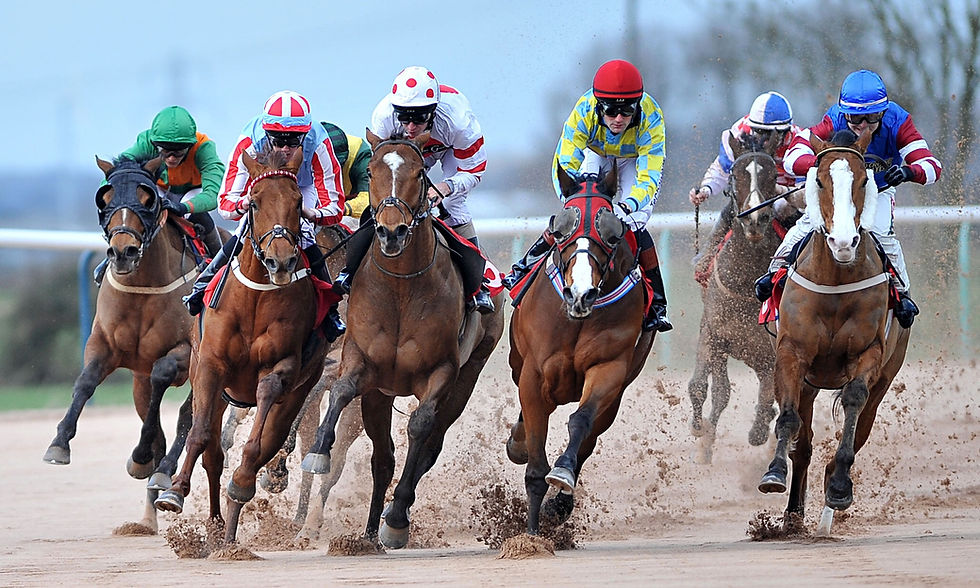
SOUTHWELL - Jump Course (UK)
This left-handed, tight track changes character dramatically based on underfoot conditions—emphasizing speed on firm ground and stamina on heavy ground, which often results in few finishers for long-distance races. The fences are stiff for a minor track, leading to a high number of casualties, and the brush-type hurdles penalize less-fluent jumping.
Southwell is a superb jumping track, known for its well-maintained turf and decent ground for summer racing. The fences require careful negotiation, and it’s not an easy course to find an opening. Dropping off the pace is risky, as it's hard to regain ground. Being tactically astute and staying handy often pays off.

STRATFORD (UK)
This left-handed, sharp track has a high number of falls/unseats due to large fences and well-run races. A water jump near the winning post was introduced in March 2008 but isn’t jumped on the final circuit. The hurdles track also sees many well-run races, with jockeys striking for home sooner due to the short straight.
Stratford is a speed track, requiring horses that jump quickly and accurately. The fences aren't inherently difficult but can be tricky because of the pace. Ex-Flat horses often excel here if they can jump well. With a long, sweeping bend into the straight, making up ground can be challenging.
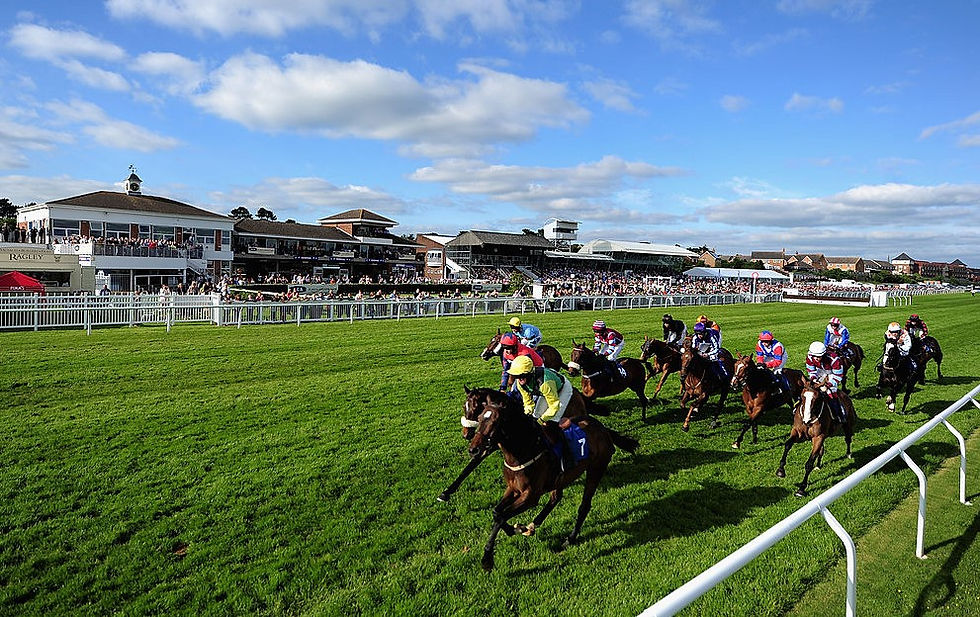
TAUNTON (UK)
This right-handed, sharp track has small, easy fences but a high casualty rate due to the low quality of horses and the course’s sharp nature. Taunton’s recently installed reservoir often provides better winter ground. It’s a great course to ride, with many good horses making their debut there, though some get beaten. The track can be tricky, as races often start far out, and the downhill run to the third-last fence and second-last hurdle can catch out novices.

THIRSK (UK)
The left-handed, oval round course spans just over a mile and a quarter, with a half-mile run-in, while the slightly undulating straight six-furlong course runs across it. Despite being almost perfectly flat with easy turns and well-leveled ground, the sharp track isn’t ideal for horses needing time to settle and work in the straight.
There’s an advantage to being near the stands' side rail on Thirsk’s sprint track, though it can get congested. The undulating left-handed top turn of the round course catches some horses out, demanding balance. If a horse handles it well, it can kick and trouble rivals.

THURLES (IRE)
Thurles is an undulating, right-handed track with a circuit around a mile and a quarter. Sections are uphill, with a steep descent to the two-furlong home straight, making it a sharp track favoring handy horses. The chase course has seven fences per circuit, two in the home straight, and a run-in of around a furlong. Remarkably well-drained, few meetings are lost to adverse weather.
Thurles offers amazing ground conditions, never getting too deep, even in the worst weather. Riders need to pace their horses up the hill in the back straight to avoid struggles later. Better ground is often found wider, especially late in the day when the inside track is chopped up.

TIPPERARY - Flat Course (UK)
This left-handed, oval track is a mile and two furlongs long with a five-furlong straight joining at the entrance to the two-and-a-half furlong straight.
The track is a speedster's delight, being flat and fast. While it's possible to make up ground from off the pace on the round track, it becomes challenging on softer ground. Over the extended seven furlongs, the bend comes up quickly, making a low draw advantageous. The sprint track is likely the fastest in the country. The draw isn’t a big factor on quick ground, but on soft ground, being drawn high offers an advantage as riders seek less testing ground along the stand side.
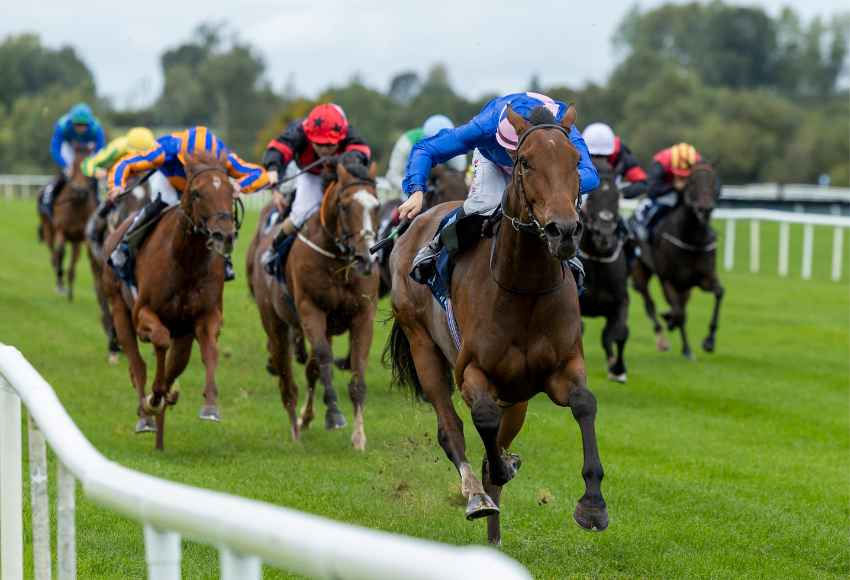
TIPPERARY - Jump Course (IRE)
Tipperary is a flat, left-handed, oval track of about nine furlongs, generally galloping in character. The chase course inside the hurdles track has six fences per circuit, with two in the home straight and a run-in of about a furlong.
A quick track similar to Cork but raced in the opposite direction, the chase track is sharp and fences ride well. It's best to stay handy, as things happen quickly and front-runners rarely fade. When it rains, the ground becomes testing, akin to Listowel and Sligo, making it hard work for many horses.

TRAMORE - Flat Course (IRE)
Tipperary is a flat, left-handed, oval track of about nine furlongs, generally galloping in character. The chase course inside the hurdles track has six fences per circuit, with two in the home straight and a run-in of about a furlong.
A quick track similar to Cork but raced in the opposite direction, the chase track is sharp and fences ride well. It's best to stay handy, as things happen quickly and front-runners rarely fade. When it rains, the ground becomes testing, akin to Listowel and Sligo, making it hard work for many horses.
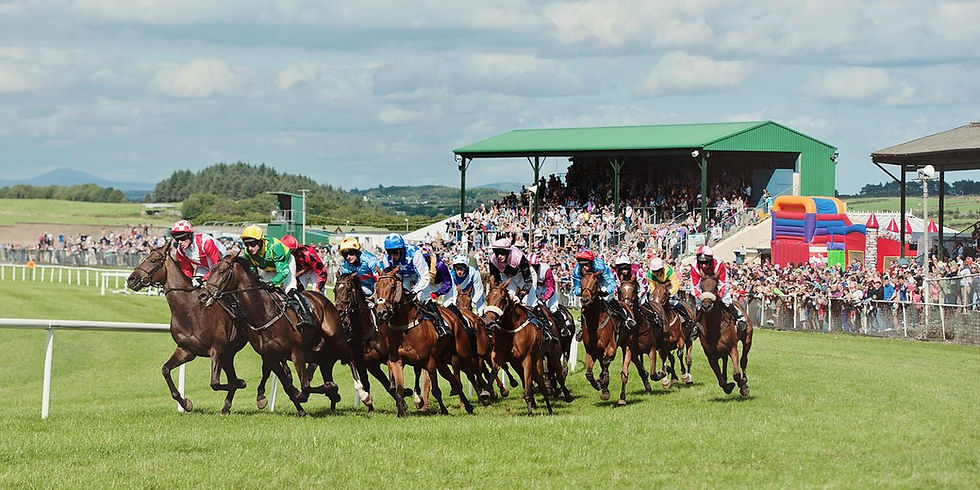
TRAMORE - Jump Course (IRE)
This undulating, right-handed track is about seven furlongs long, with sharp turns and sections on a climb, favoring handy horses. The chase course has five fences per circuit, with a long downhill run to the second last, just before the short, uphill home straight. The run-in is around 160 yards.
It's probably the trickiest track to ride in the country, requiring patience on the downhill section after climbing away from the stands. It produces course specialists among both horses and riders. Jockeys need to be brave yet smart. The fences are soft, but necessary for such a challenging track.

UTTOXETER (UK)
Uttoxeter is a left-handed, sharp track with a reputation for gruelling conditions in winter, making stamina crucial. On firm ground, racing prominently pays off, especially on the chase course. The fences are average in stiffness, with many casualties due to fatigue in the latter stages. Recently, the number of flights on the hurdles track has been reduced to nine.
Being a quick track, it emphasizes a horse’s ability to travel on the bridle. Struggling early indicates a likely defeat in both fences and hurdles. Tactically, going wide down the back straight isn't alarming, as the track’s slight 'S' shape means the shortest way isn't always the inside.

WARWICK (UK)
Warwick is a left-handed, flat track with a steep climb after the winning line, descending gradually to the turn into the back straight. The sharp track has tight bends and a long back straight. It’s known as a tricky jumping track due to five fences in quick succession in the back straight, yet it has one of the lowest casualty rates in Britain. Front-runners or those ridden prominently tend to do well on both courses.
Warwick is a speed track, making it tough for novices. Inexperienced horses can panic with the quick fences and undulations. The sharp hurdles course suits ex-Flat horses. Non-stayers struggle in long-distance chases with their end-to-end gallop.

WETHERBY - Flat Course (UK)
Wetherby’s left-handed Flat course shares the hurdles course, about a mile and a half in circumference. There’s no straight sprint track, so 5½ furlong races start on a chute near the end of the back straight.
Since Wetherby began staging Flat racing, it’s received positive feedback from jockeys. Being handy is crucial, with a prominent racing style and aggressive tactics often paying off. The jumps course has always suited speedy horses close to the pace, and this holds true for Flat races as well.

WETHERBY - Jump Course (UK)
Wetherby is a left-handed, galloping track now restored to nine fences per circuit, with four in the home straight placed inside the hurdles track due to the A1 realignment. The fences still challenge those who aren’t accurate, providing a fair test suitable for free-running, long-striding horses.
Wetherby is a quick track, making it advantageous to ride handy, especially after the changes from the A1 redevelopment. Previously seen as tough for novices, the course is now fair and features more manageable fences. Saving energy for the finishing kick is important, yet front-runners shouldn’t be given an easy run.

WEXFORD (IRE)
This undulating, right-handed rectangular track spans under nine furlongs. Despite the slightly uphill two-furlong home straight, it’s a sharp track with tight turns that favor speedy, handy horses. The hurdles course is inside the chase track, which has six fences per circuit and only one in the finishing straight.
The track recently changed from right-handed to left-handed, receiving positive feedback due to its kinder nature and uphill finish. The undulations and varying ground conditions make it difficult to maintain a uniform surface. The fences remain fair, adding to the track’s overall appeal.
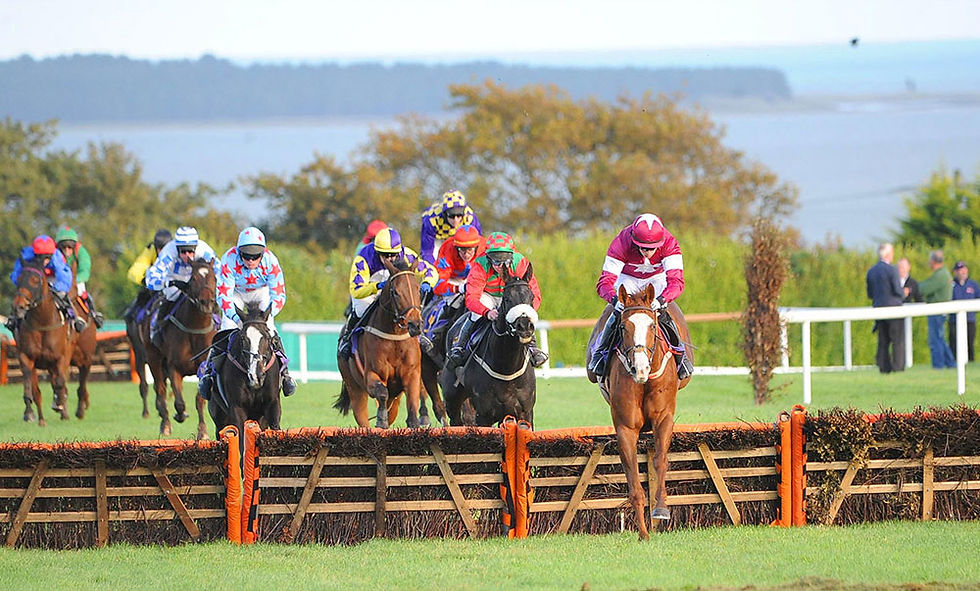
WINCANTON (UK)
This right-handed, flat, and fundamentally sharp track is one of the country’s sharpest tests on firm ground, making hold-up tactics counterproductive. On very testing ground, however, it can provide a thorough test, often resulting in strung-out fields and a low completion rate, especially on the hurdles course. This is possibly due to its tight nature, which ensures well-run races regardless of conditions, often causing front-runners to overdo it.
The fences are stiff and tricky, with three fences in the home straight coming so close together that it often makes it difficult to come from behind.
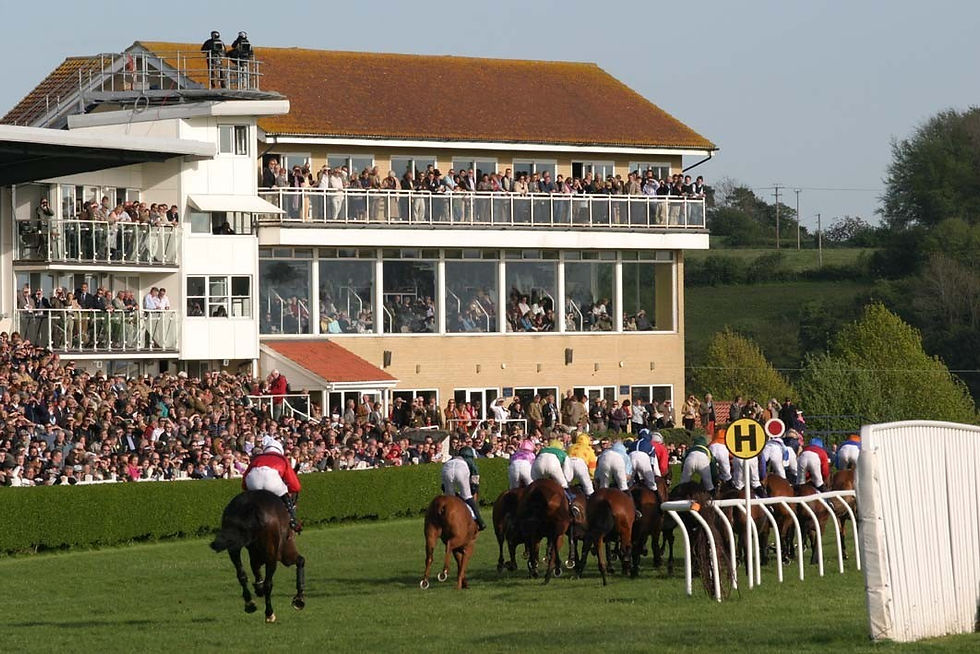
WINDSOR - Flat Course (UK)
Windsor’s figure-eight track spans twelve and a half furlongs, with both left and right-handed turns in mile-and-a-half races, but only right-handed turns in shorter distances. Though flat, the track is sharp, yet its nearly five-furlong run-in suits galloping types. In very testing conditions, fields often track to the far side, especially in sprints where high draws are favored.
The bottom turn, known as ‘carnage corner,’ can cause trouble if the front runner slows, creating a concertina effect. A sharp right-hander, aggressive tactics there can gain an advantage. Balanced horses and bold rides often benefit, particularly as late paths open up on the stands’ rail.

WOLVERHAMPTON (UK)
Wolverhampton’s all-weather track is a flat, left-handed oval just under a mile long, with sharp bends and a narrow straight of under two furlongs. It favors horses that can hold a good position rather than those needing time to find their stride. The track surface changed from fibresand to polytrack in 2004, and to tapeta in 2014.
The 5f, 7f, and extended 1m starts are draw-dependent, favoring low, left-hand numbers. The 1m 4f start is tricky but allows more time to get sorted. Though tight, the course is well laid-out and fair, but most jockeys still avoid the inside rail.

WORCESTER (UK)
This flat, left-handed track has easy turns and relatively simple portable fences, making it one of the country’s easiest courses to negotiate. Many horses tend to drift right in the home straight. While the long home straight should theoretically benefit hold-up horses, racing handily in quick summer conditions often proves more advantageous. Be cautious with close finishes, as the camera is positioned some distance before the winning line.

YARMOUTH (UK)
Yarmouth is a narrow, left-handed oval track around thirteen furlongs long, featuring a five-furlong run-in and a straight mile course. Aside from a slight fall before the run-in, the track is flat with sharpish bends. The straight was leveled to remove surface undulations and resurfaced in 2015.
The recent relaying work aims to restore Yarmouth to its former glory as one of Britain’s best galloping tracks. Despite past issues with ridges, it’s a lovely fair course. The long home straight provides ample time from the turn in. With the flatter surface, some hard-luck stories might emerge on the far rail.

YORK (UK)
York is a left-handed, flat, and very fair track, ideal for long-striding gallopers. The track was made into a circuit in 2005, offering a straight 5f/6f track, with 7f races starting on a chute. Recently, fields tend to race down the center, especially in testing conditions.
York, a big galloping track, sometimes favors the last challenger rather than front-runners, who often get picked off around the 1f marker. The course is high-quality with wide, ridge-free terrain, lovely sweeping turns, and no draw bias. When the ground is soft, the Knavesmire truly tests horses' endurance, making it a challenging course.

